La Savane des Esclaves (The Savannah of the Slaves) is a tour through 400 years of the history of Martinique. It is a representation of the old Martinican traditions, with its huts and habitats of yesteryear. Set in a botanical garden, it offers a pleasant view.
You are invited into an ancient Amerindian village with its traditional houses, typical of Martinique. Through a park of three hectares, you will discover a reconstruction of the authentic Creole hut. In each hut, you will find surprising information about the daily life of yesteryear. Antique objects and furniture are displayed to help you imagine daily life and traditions. Immerse yourself in the history of 400 years ago until the abolition of slavery. Learn more about the ancestors, but also the customs of Martinique and its natural beauty.
Gilbert Larose is the creator of the Savane des Esclaves in the countryside of Trois-Ilets. The project is realistic and authentic: materials and techniques of yesteryear are used to reconstitute the Creole hut. Twenty-five Gaulette huts (made with gaulette braided branches and thatched roof) and traditional huts made of original wood, cane leaf roofs, dirt paths: nothing has been left to chance to immerse yourself in an early 19th century Amerindian village. You will discover in particular the history of the Neg Marron. He is a slave who fled the plantations and his master’s property to take refuge in nature. Together, these slaves freed from their chains created a way of life with specific customs and a local language.
An explanatory video full of information is proposed at the beginning of the visit. Then you will be free to follow a guided tour or to wander around without a guide. The many information panels will help you better understand the way of life in the past.
The route starts at Rue Case-Nègres. These are the oldest, rudimentary dwellings, made of wood and reeds. Enter the different huts to learn how cassava flour, sugar and cocoa were made. Continue the walk towards the Village Antan Lontan, dedicated to the traditional huts built after the abolition of slavery. They show the evolution of construction techniques. The materials used are more elaborate: cob, worked ti-baume wood and latanier leaves for the roof… In the Creole garden, try to recognize the basic foodstuffs of yesteryear: sweet potatoes, corn, chili peppers, guava…
More about Neg Marron:
“Nèg Marron” (or Neg Marron) refers to runaway slaves who escaped from slavery in the French West Indies, particularly in Martinique and Haiti. In Martinique, “Nèg Marron” are a significant part of the island’s history and cultural identity, with places like La Savane des Esclaves commemorating their lives and resistance. They are often depicted as symbols of freedom and resistance, and there are monuments like the Marron Inconnu statue in Haiti that honor them.
Here are the pictures.
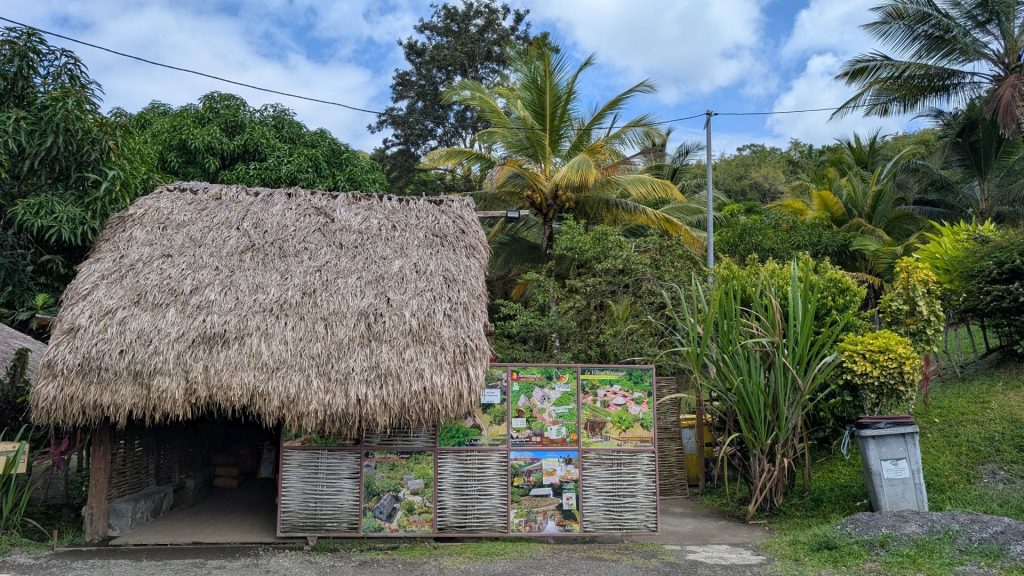
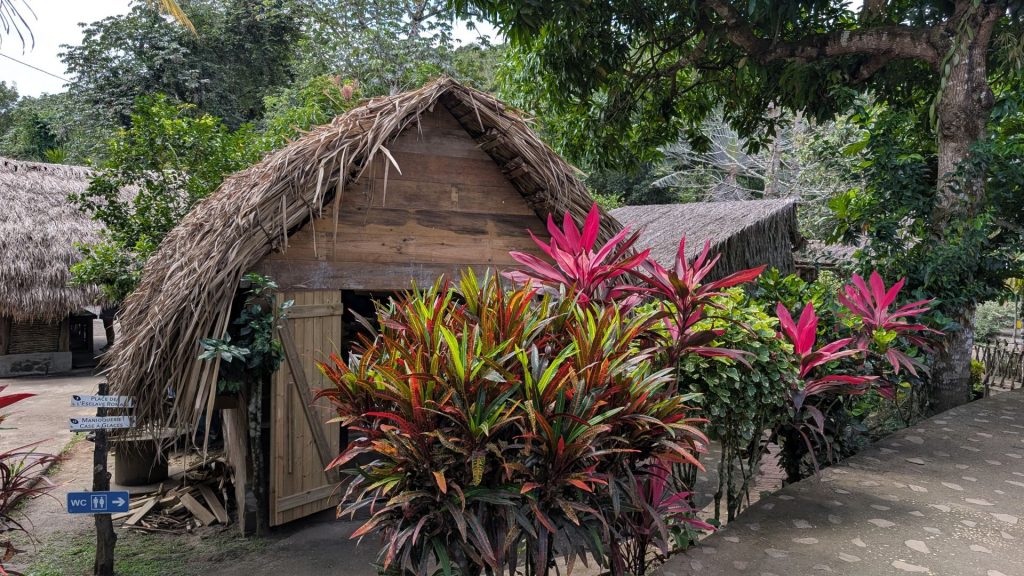
Rue Case-Nègres
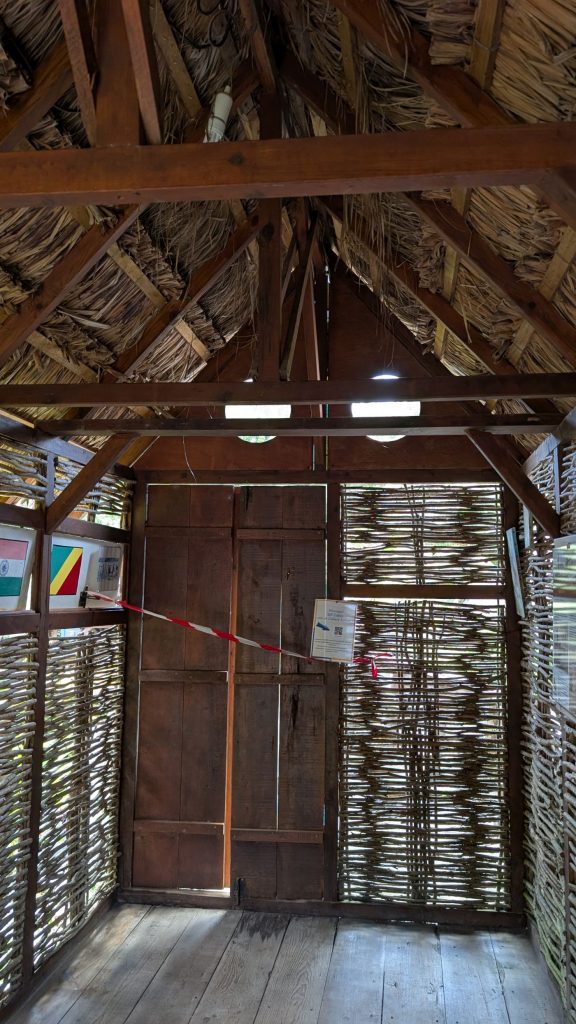
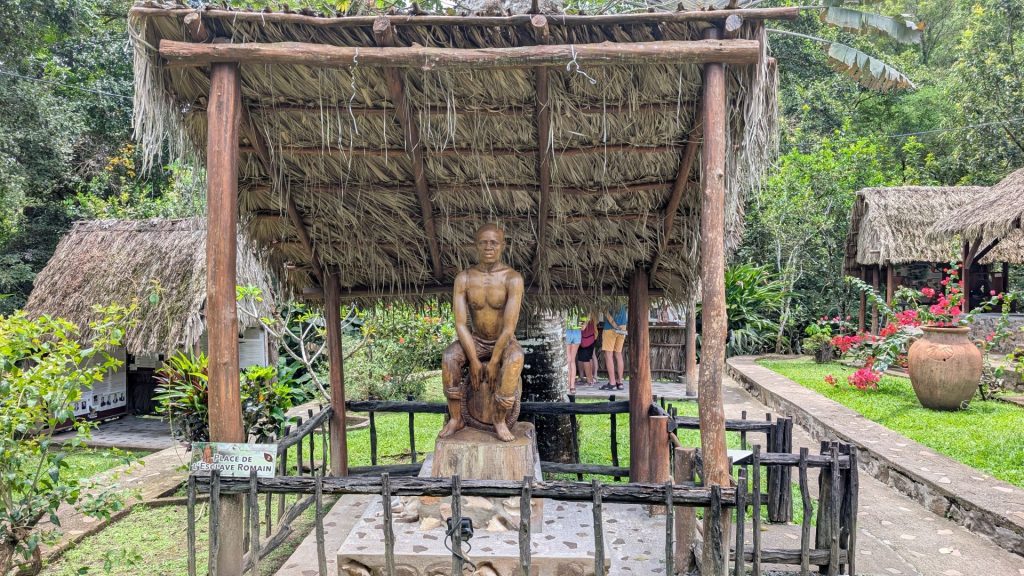
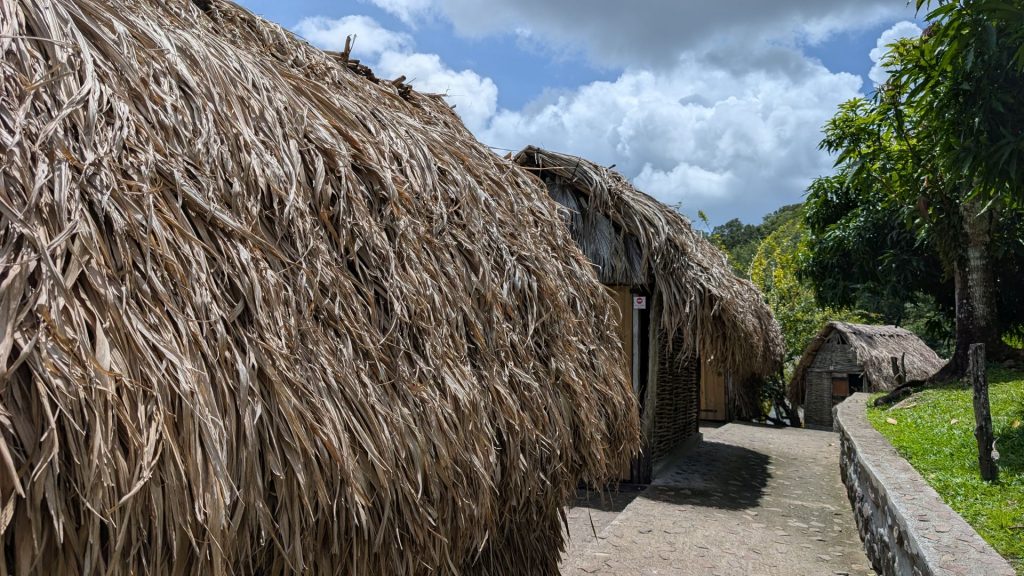
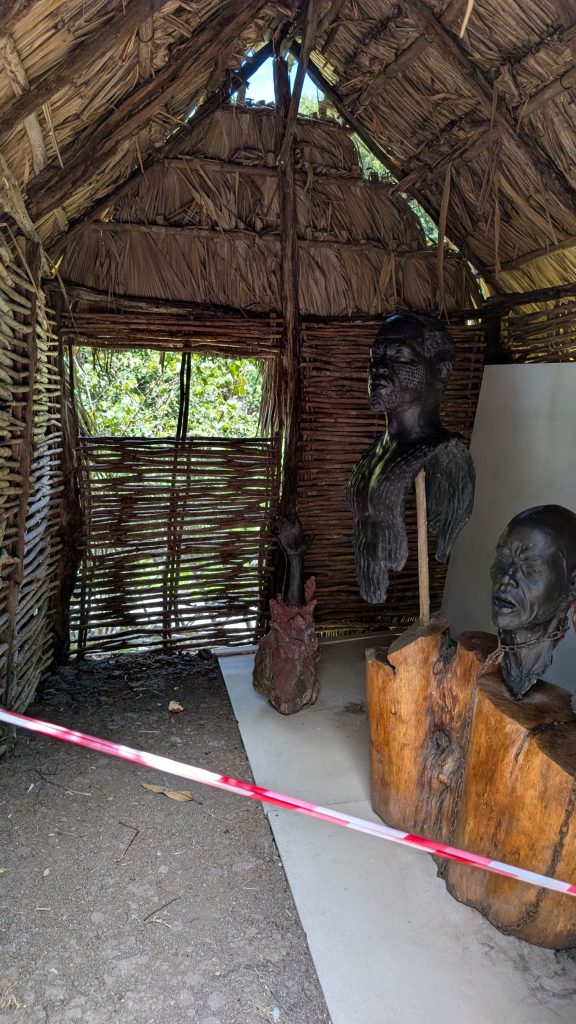
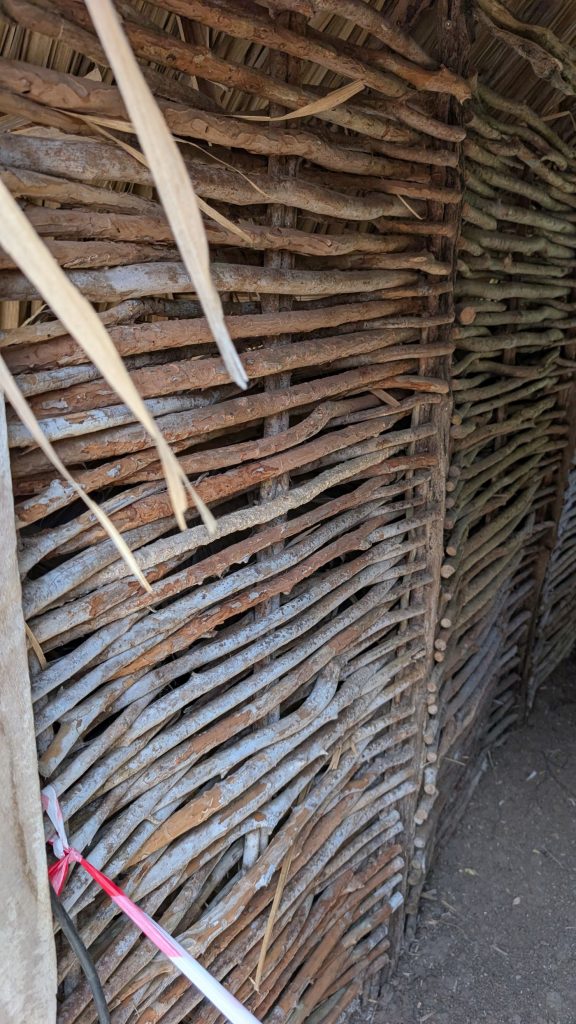
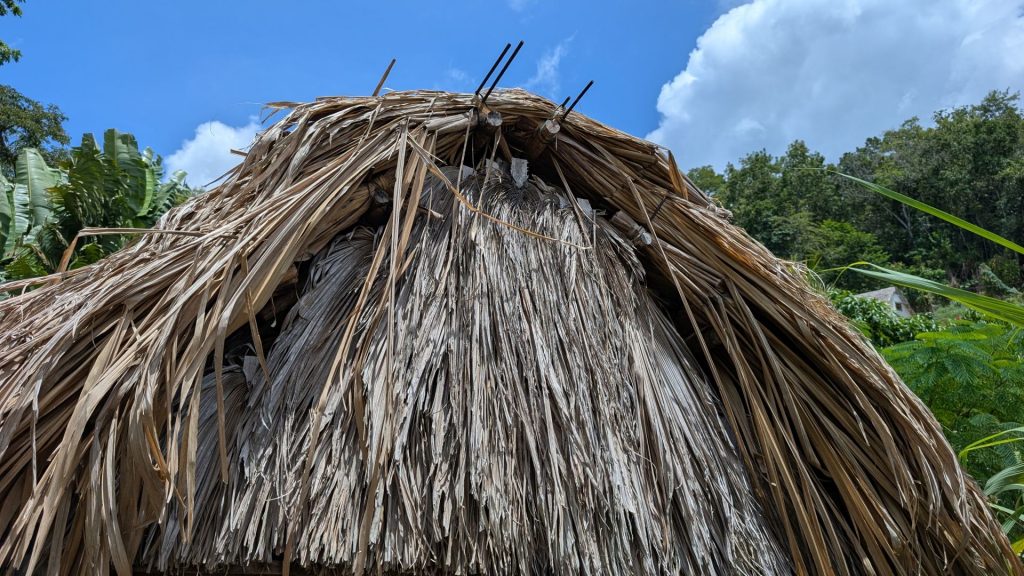
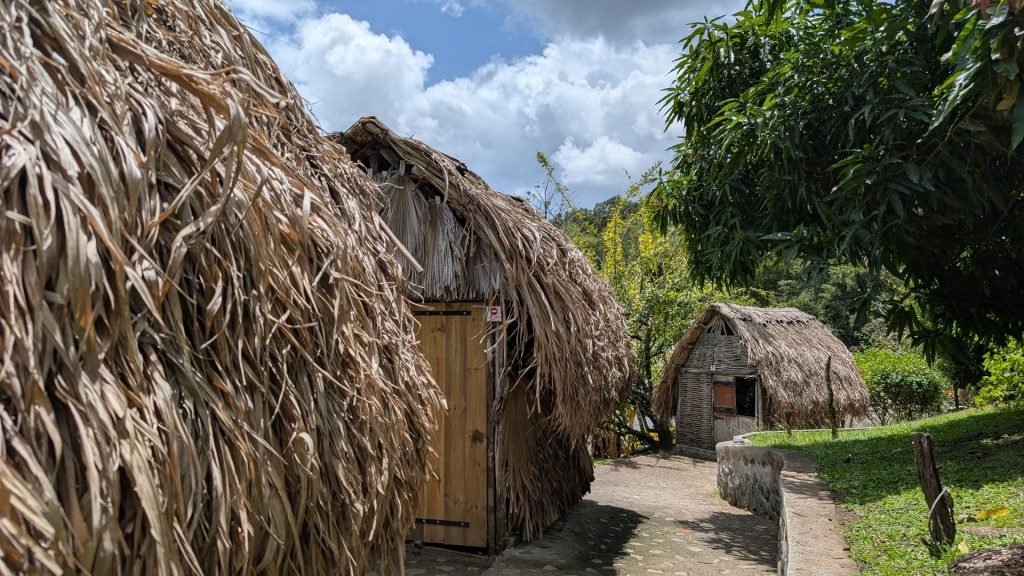
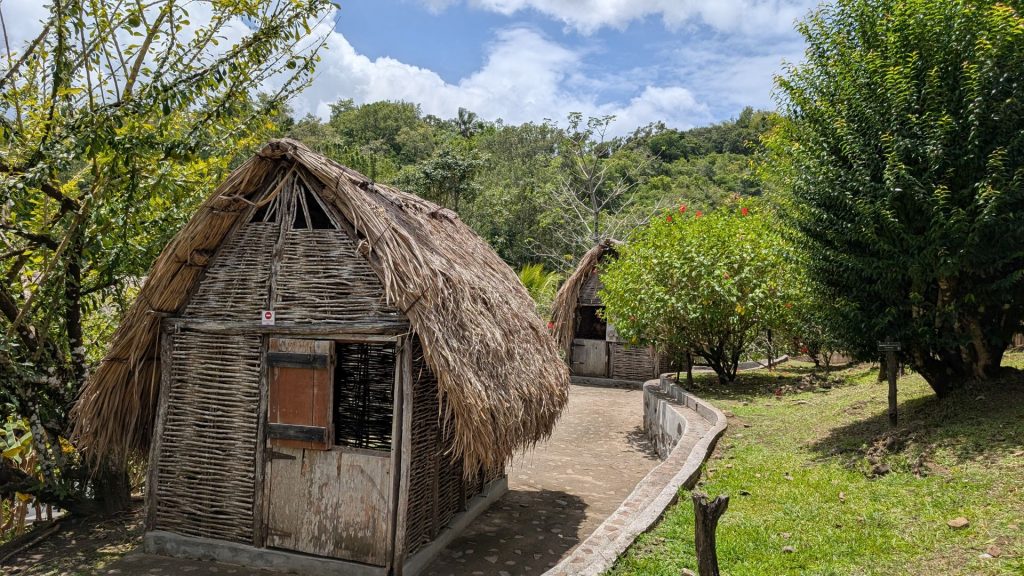
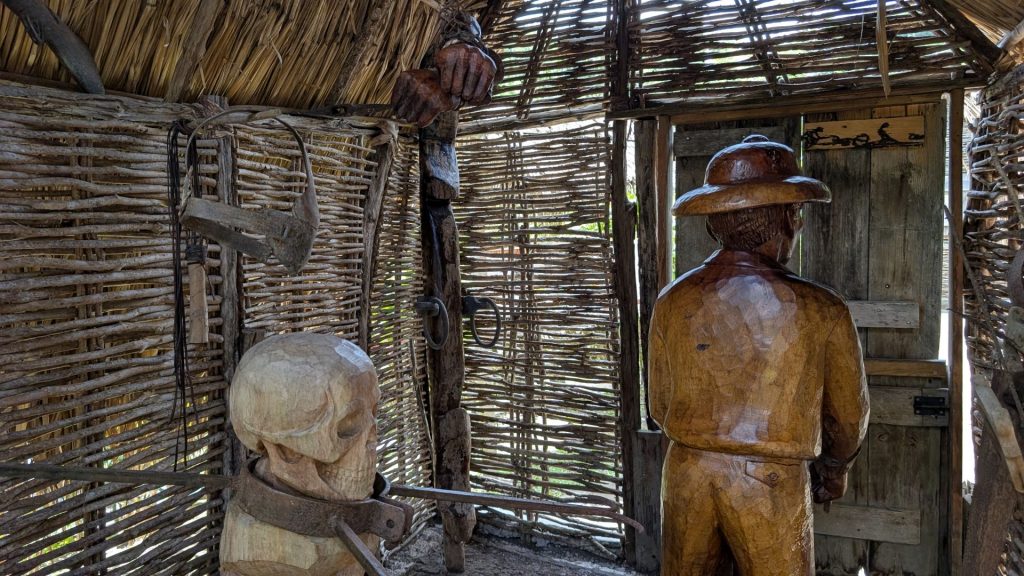
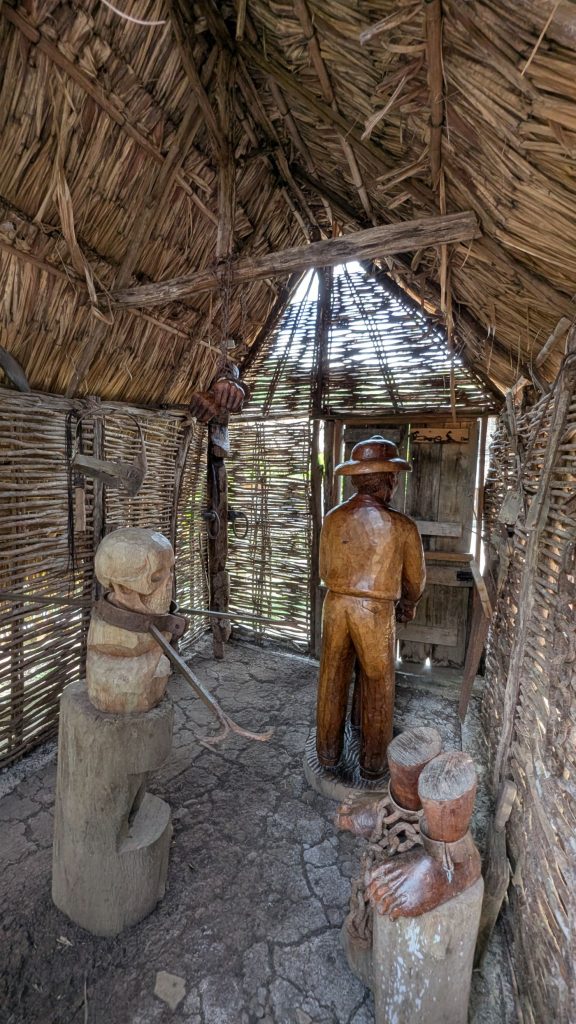
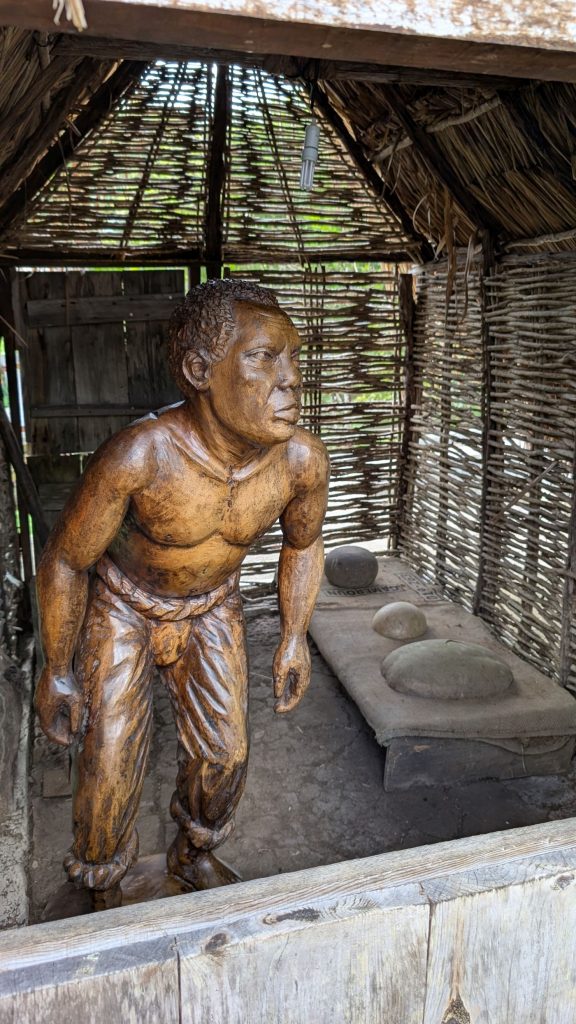
Le Village Antan Lontan (Traditional Creole Village) Garden, and Medicinal Garden
As noted above, this section of the property is dedicated to the traditional huts in which the Martinican people lived after the abolition of slavery.
The kitchen was always outside, in front of the house. Villagers cooked on three stones to form the hearth. Next to the fire is a workbench to put dishes on. All the dishes are made from a type of gourd called a calabash, the Creole name is a “coui.”
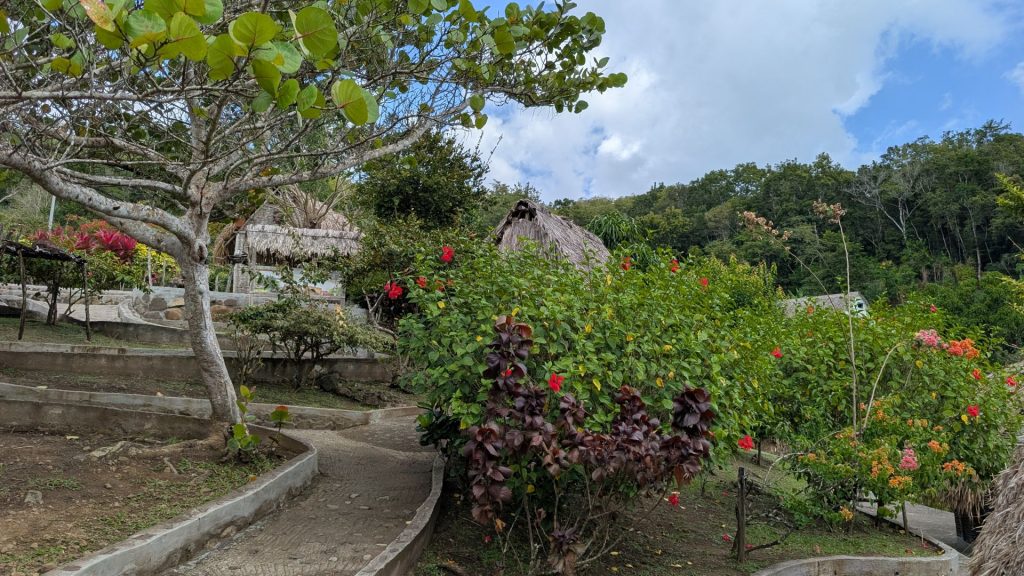
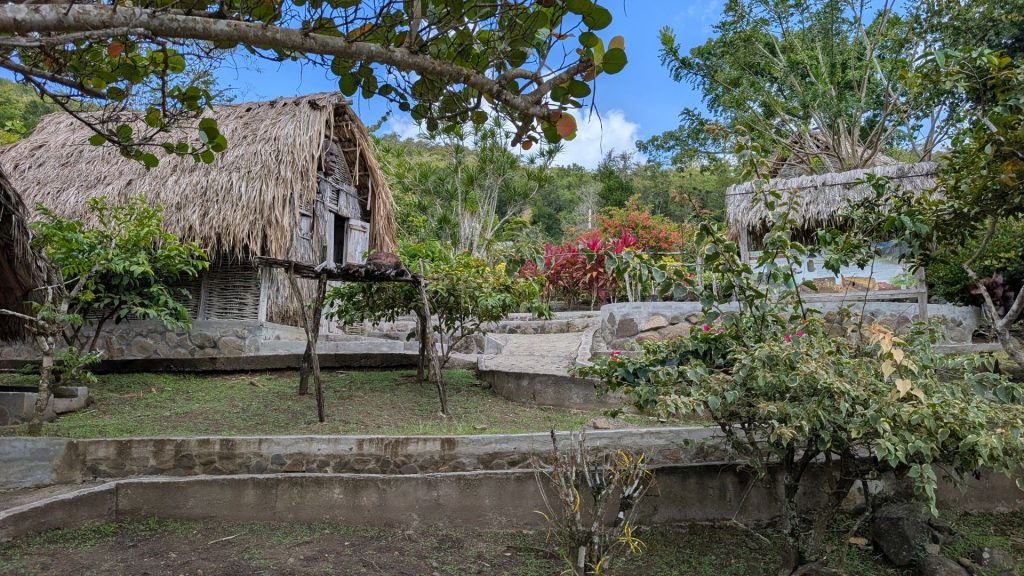
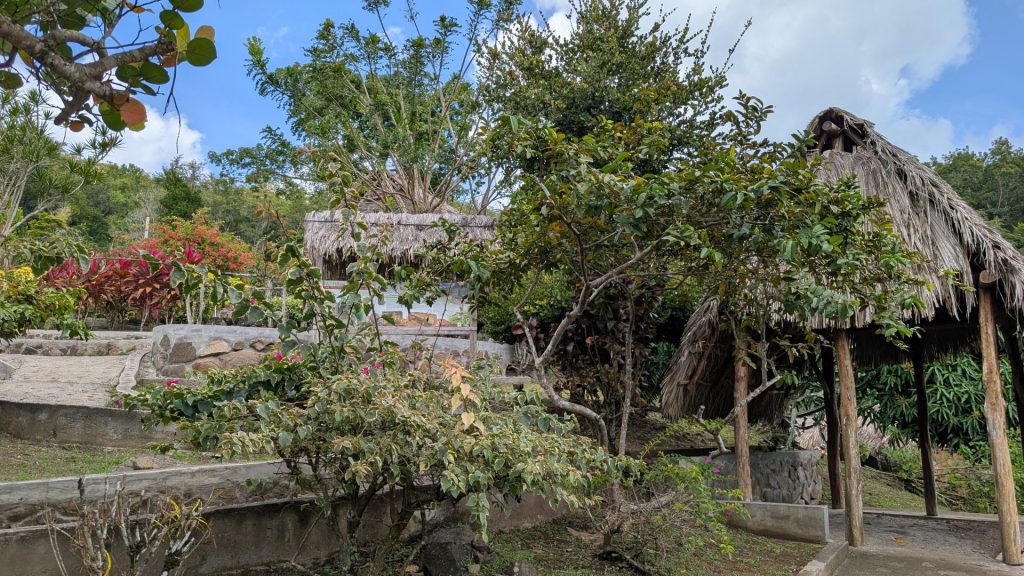
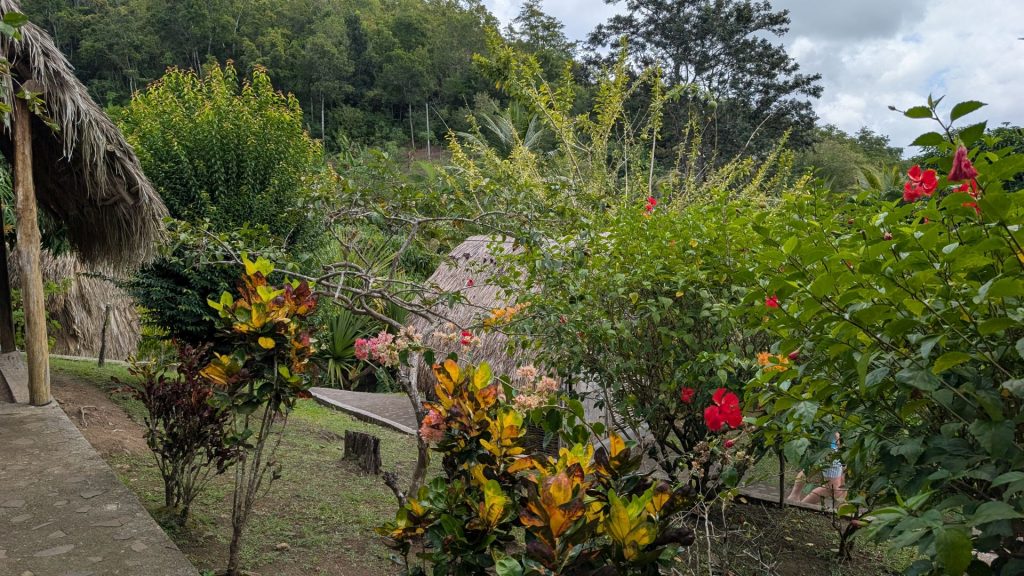

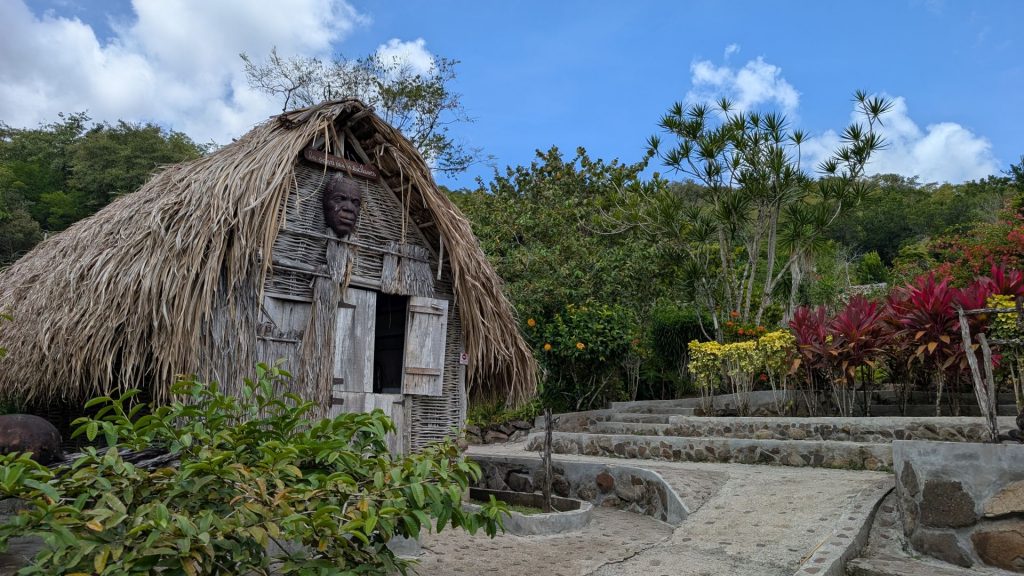
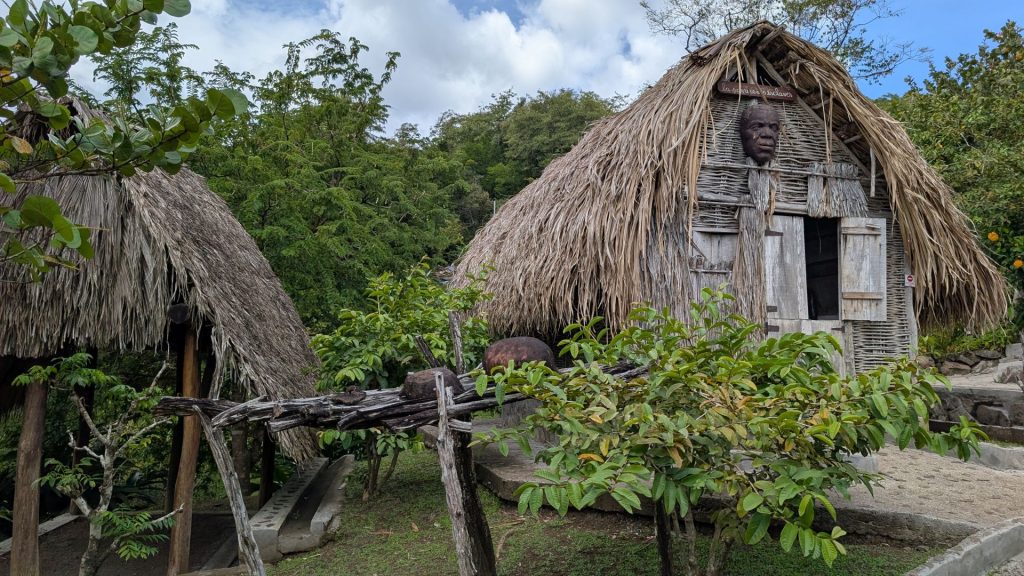


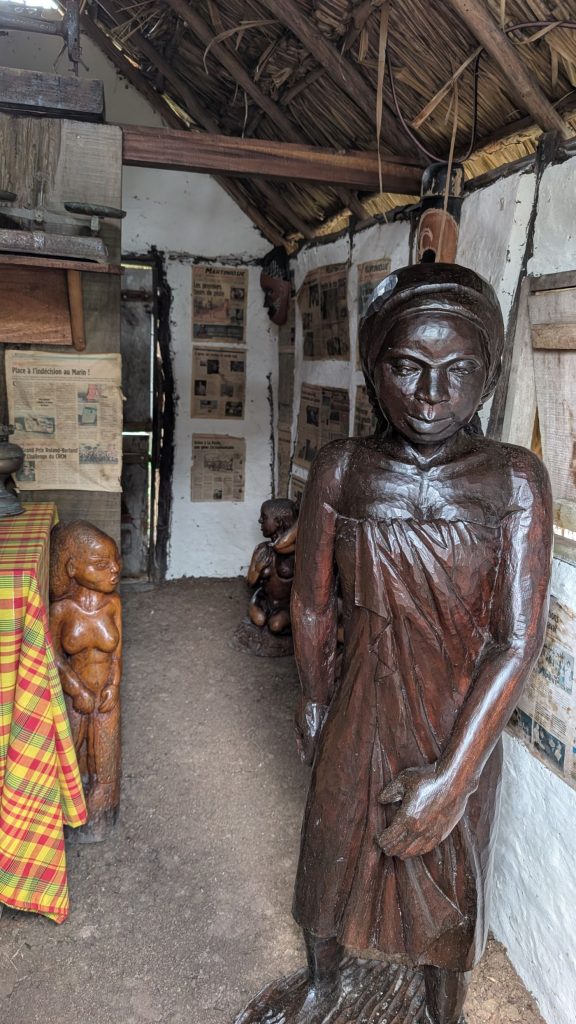
Next to the house a large fruit tree was planted to provide shade. Landscaping and floral gardens were very important to beautify the village and create an idyllic atmosphere. Harmony was very important in the village; neighbors helped each other and shared fruits and vegetables.
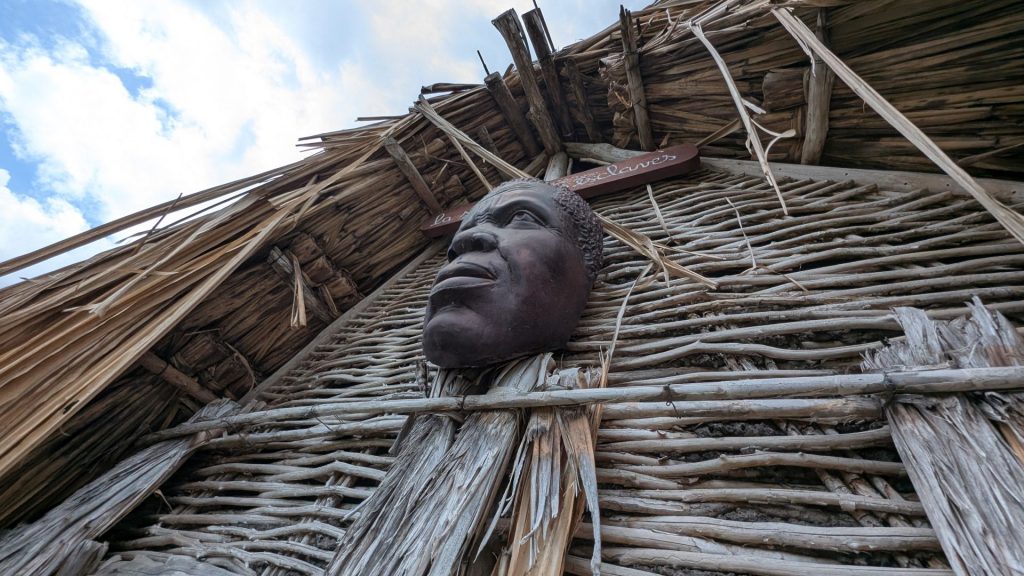


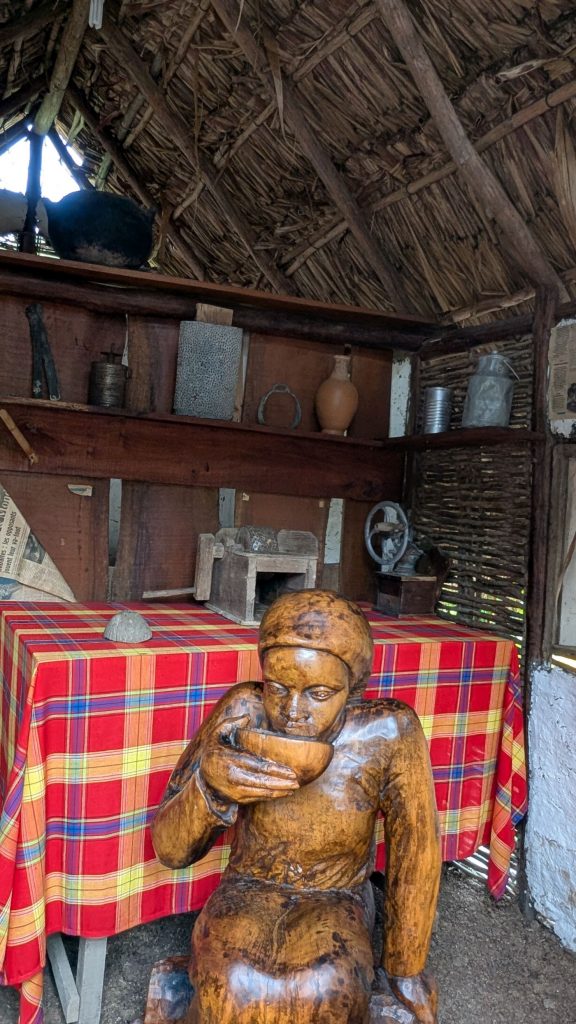
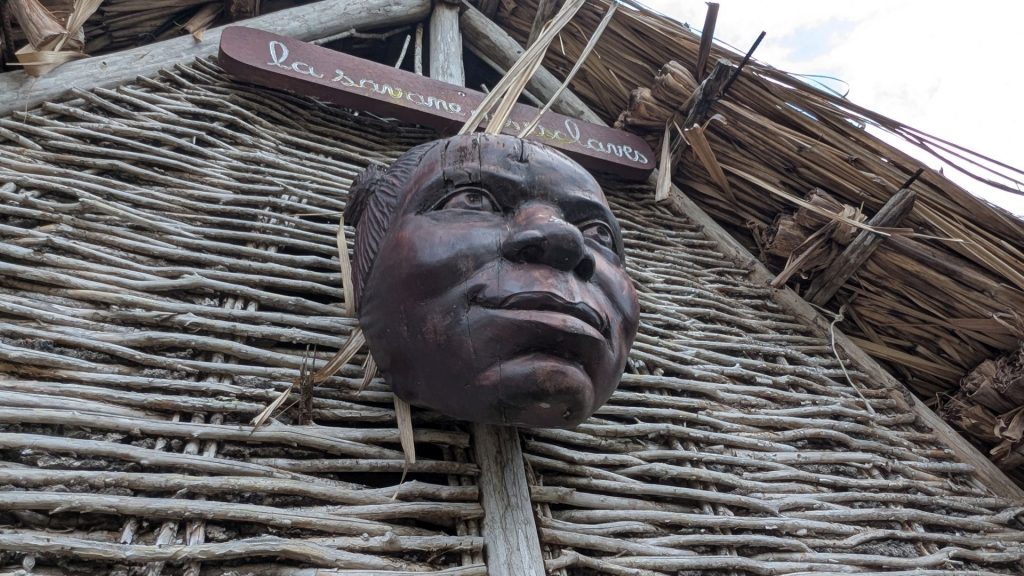
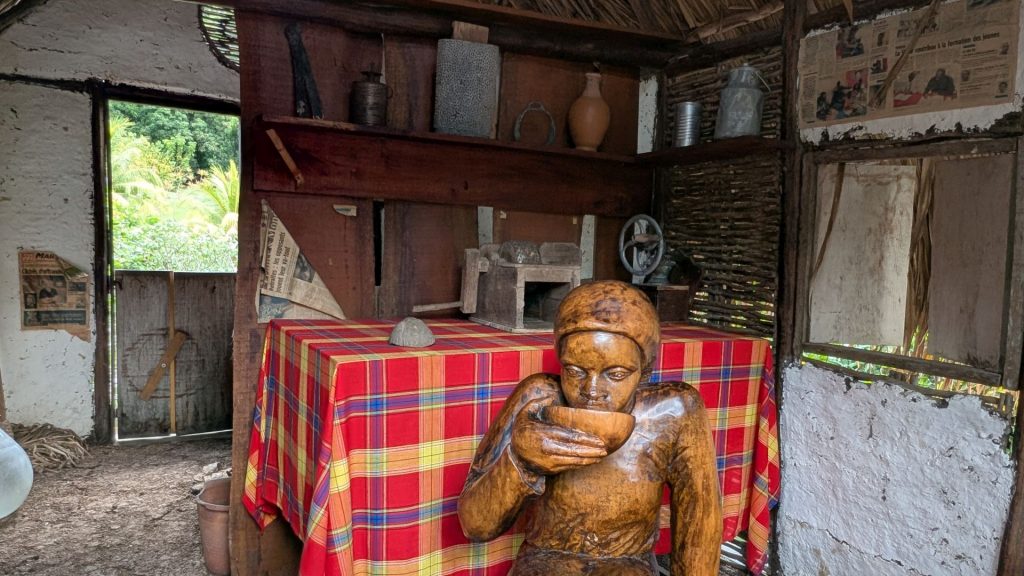

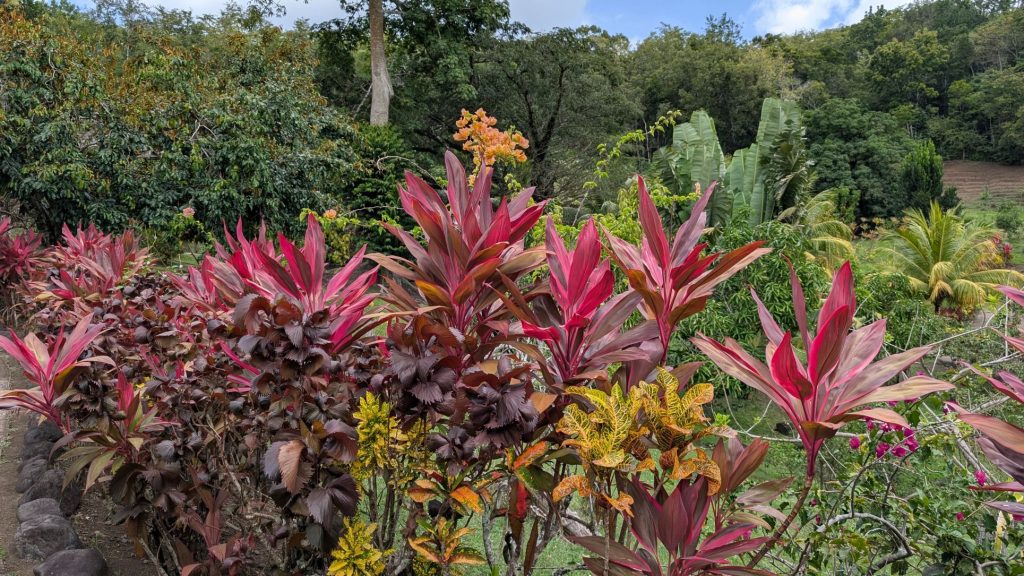
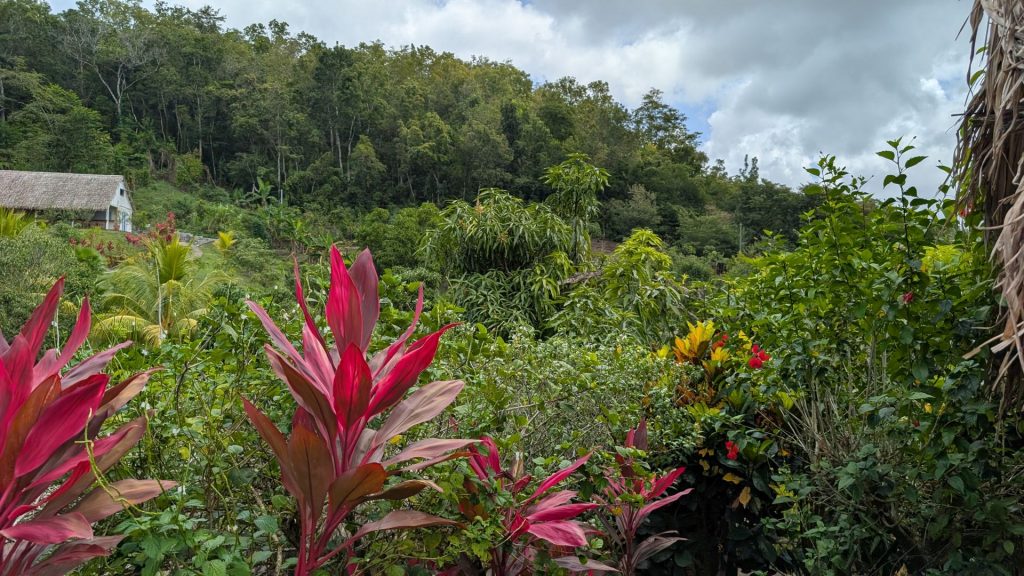
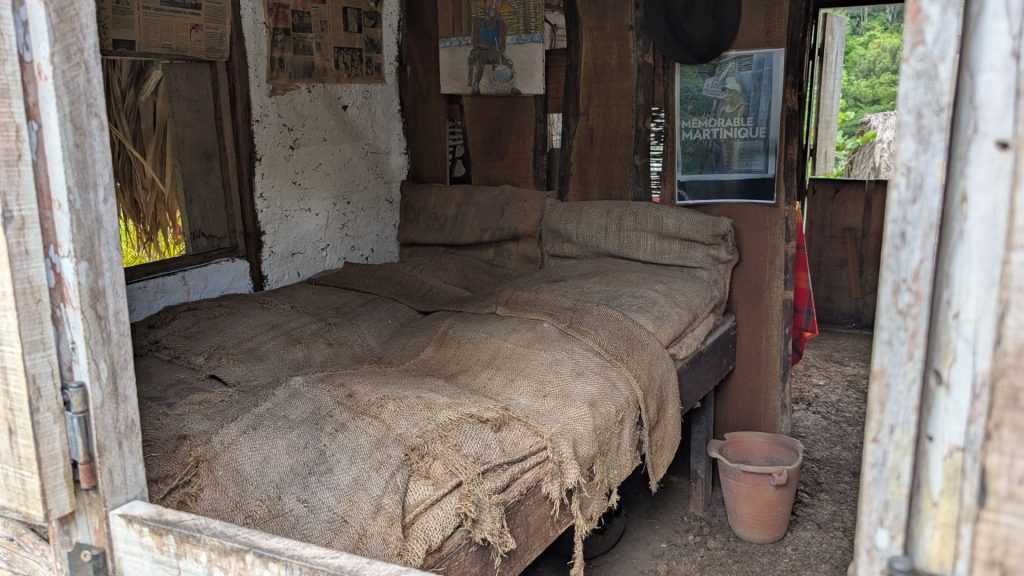
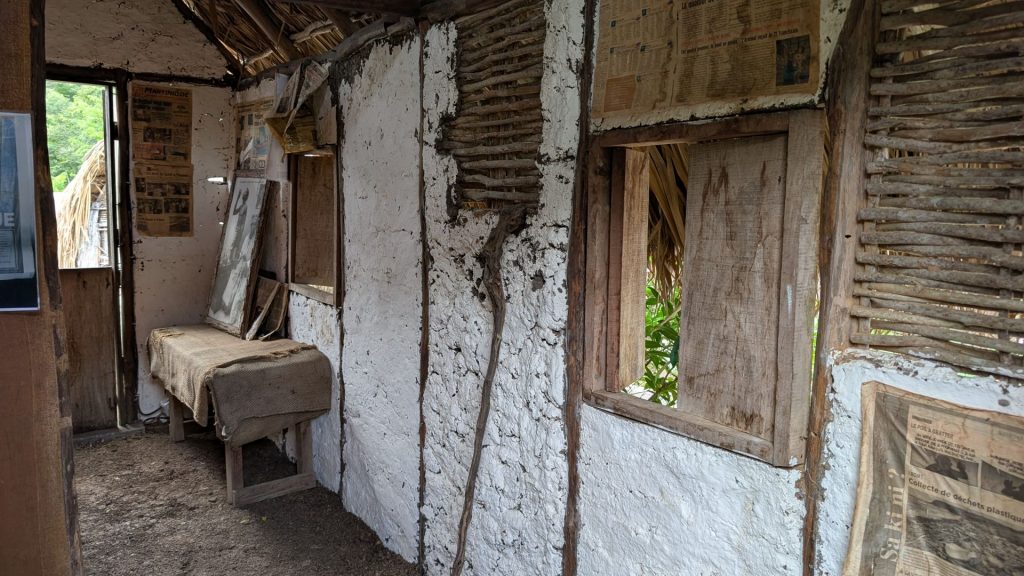
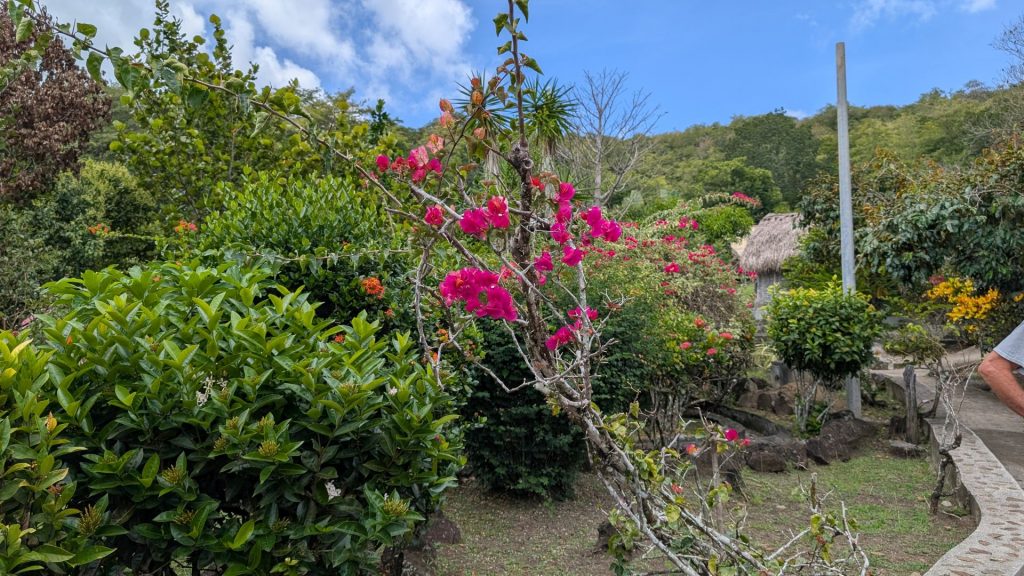
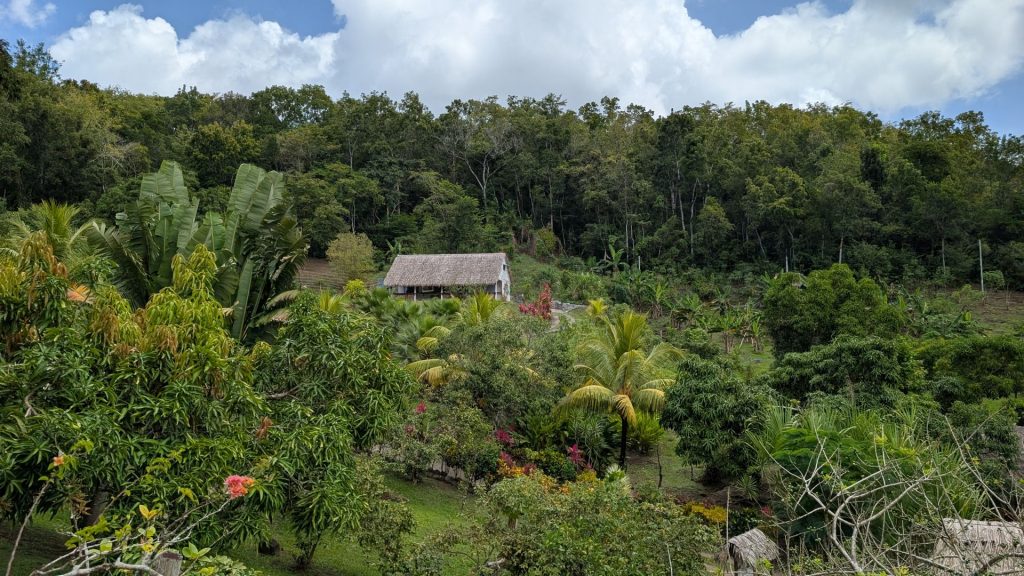
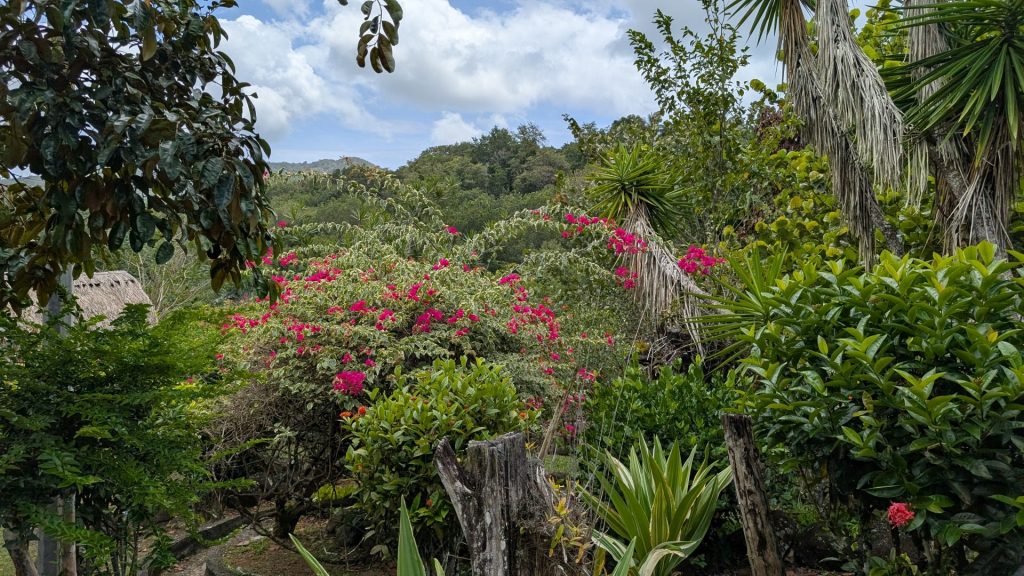
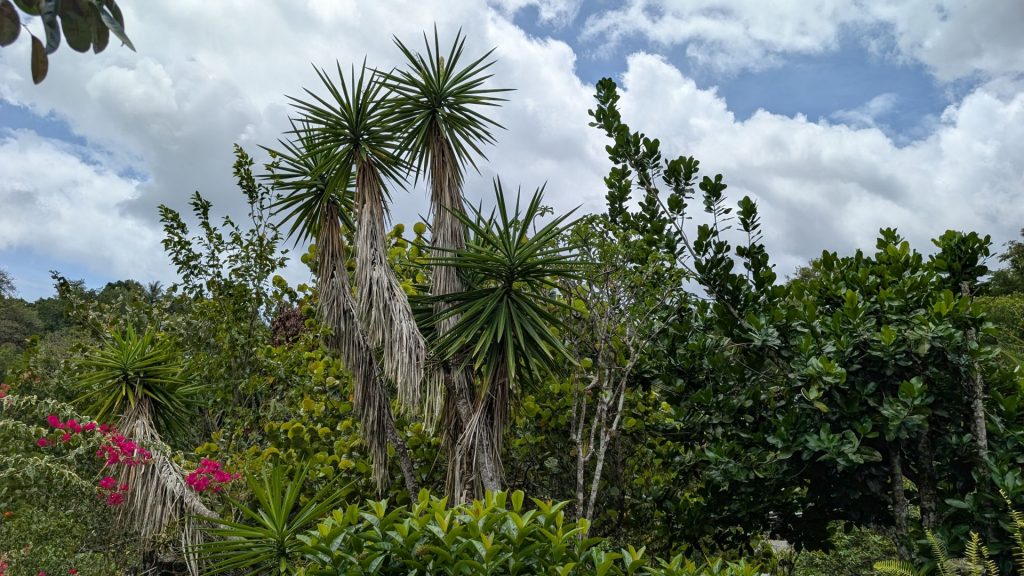
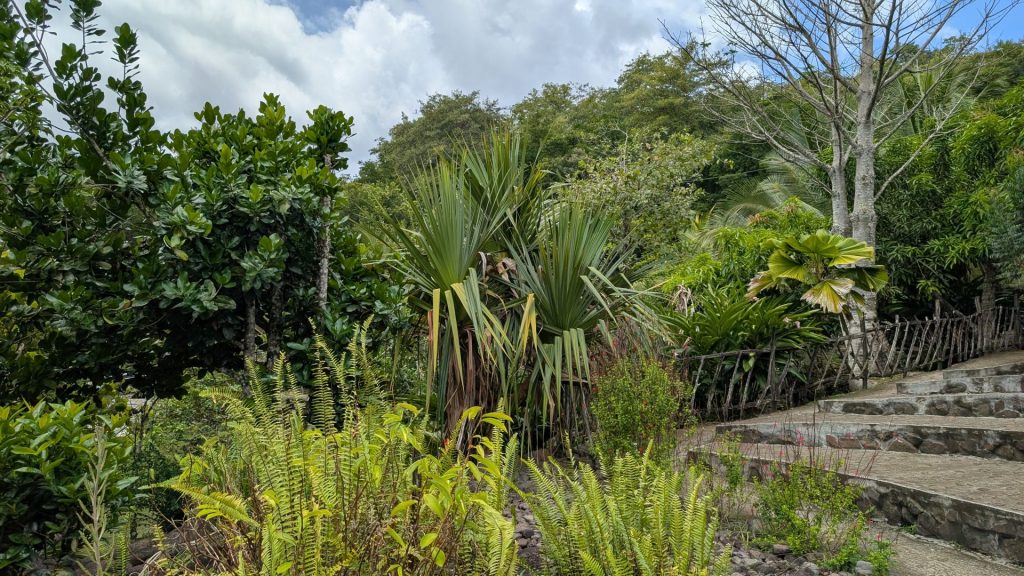
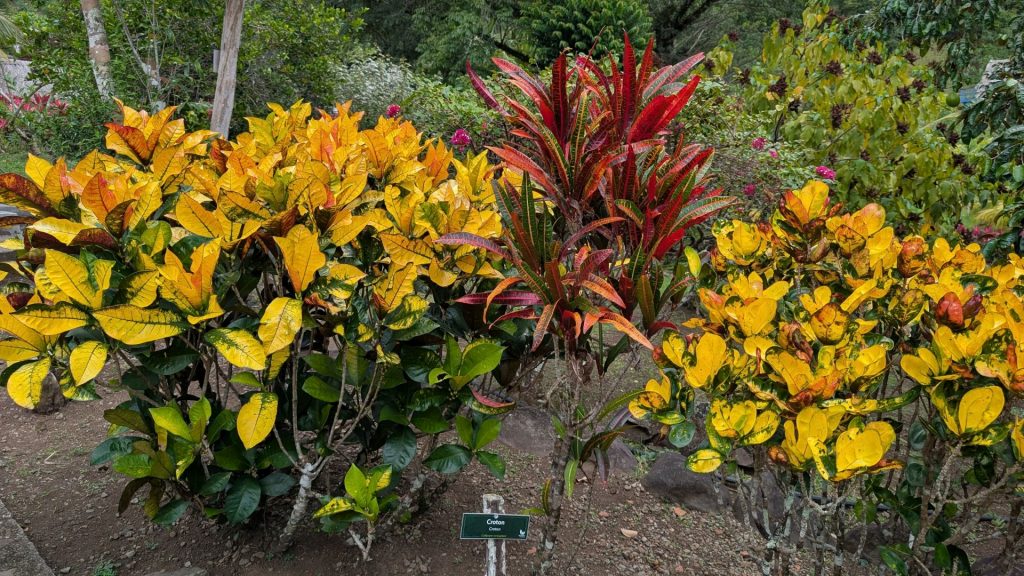
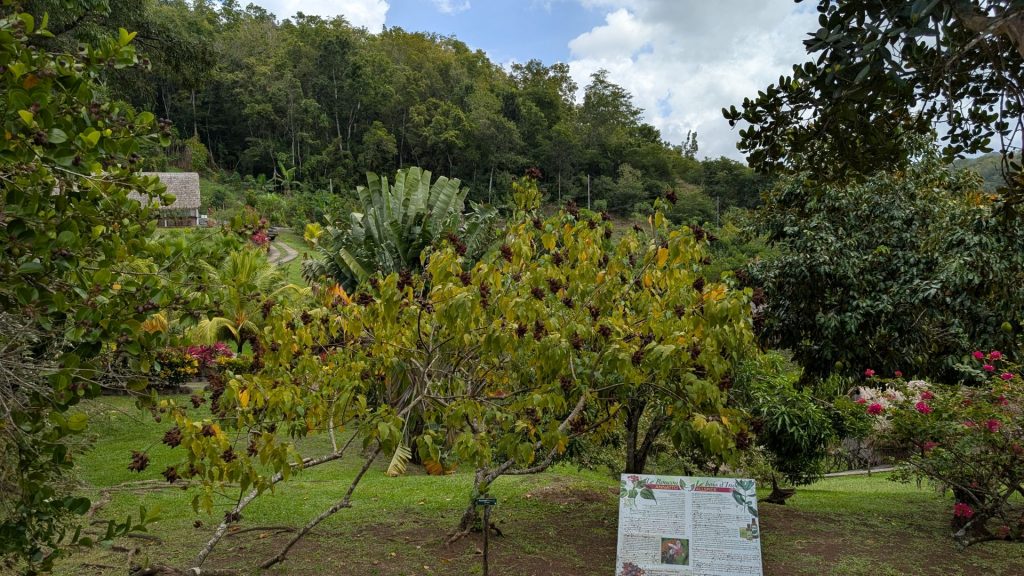
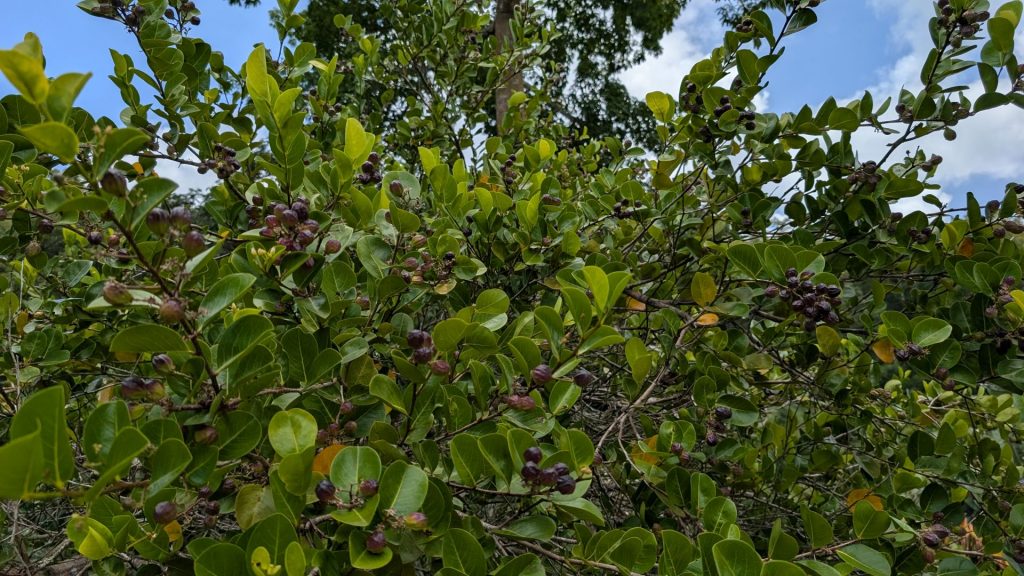
Bushes and trees provided seeds and leaves for cooking, medicinal purposes, and for wood. These are still used today. For example, allspice wood was used to build the roof huts seen at La Savane des Esclaves. Allspice leaves are used like bay leaves. And the essential oil found in the leaves is distilled into rum to make Bay Rum, a topical product massaged onto muscles to relieve aches, used especially by athletes.
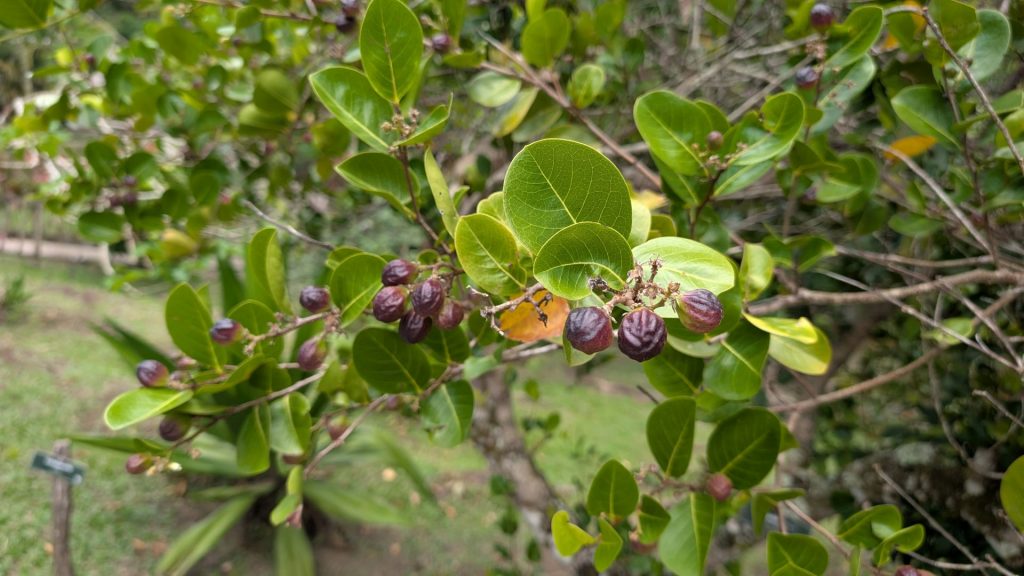
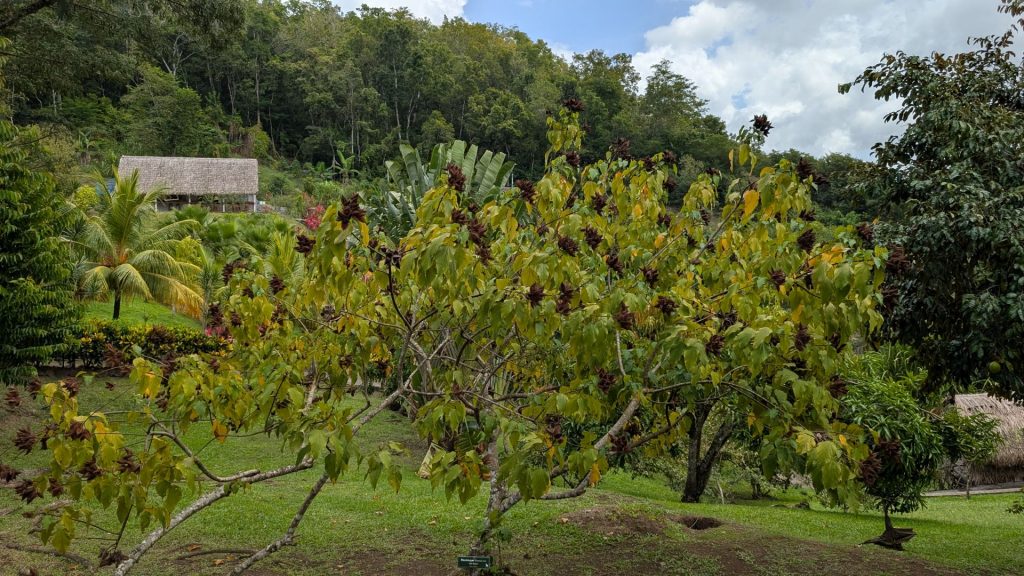
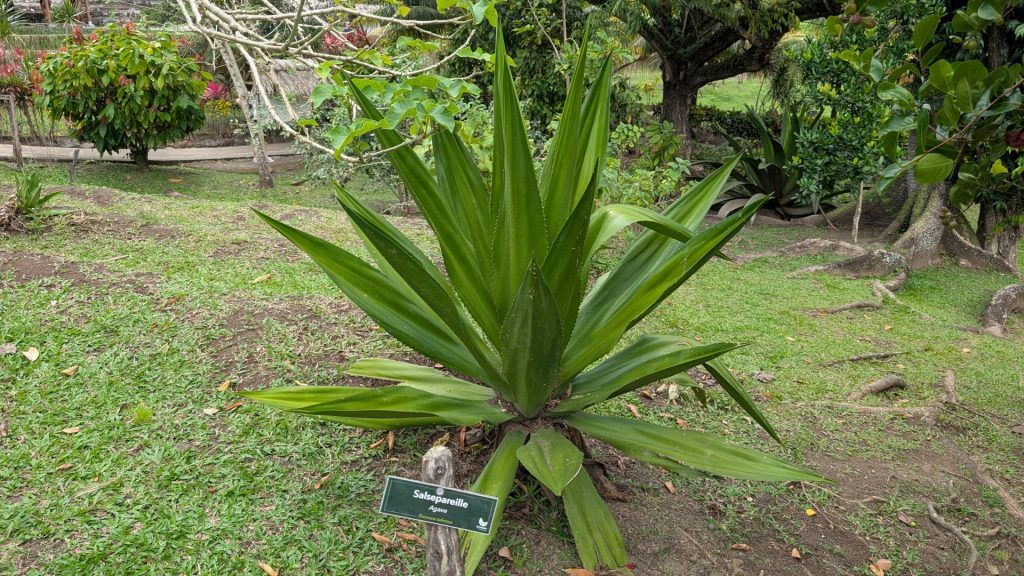
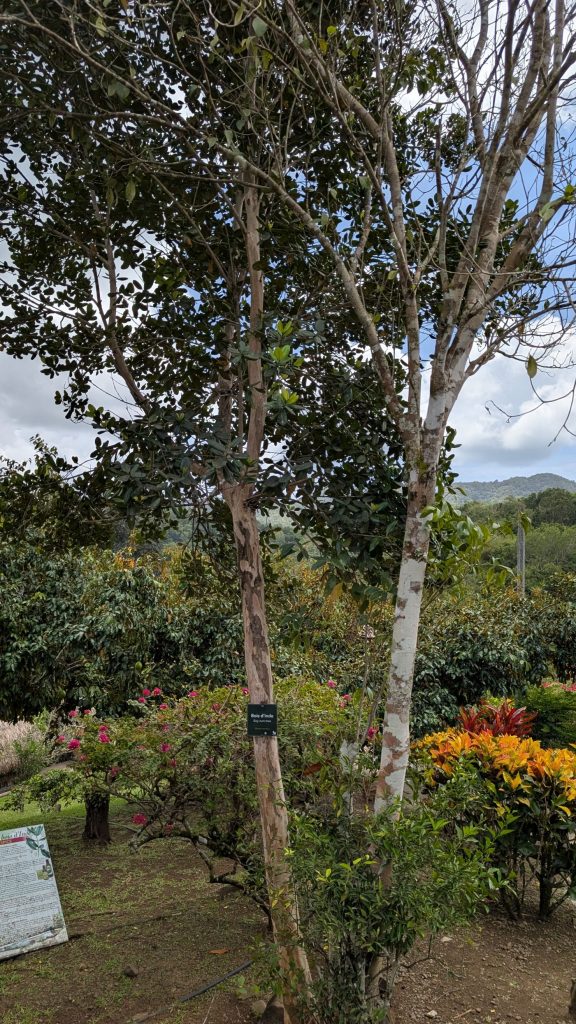
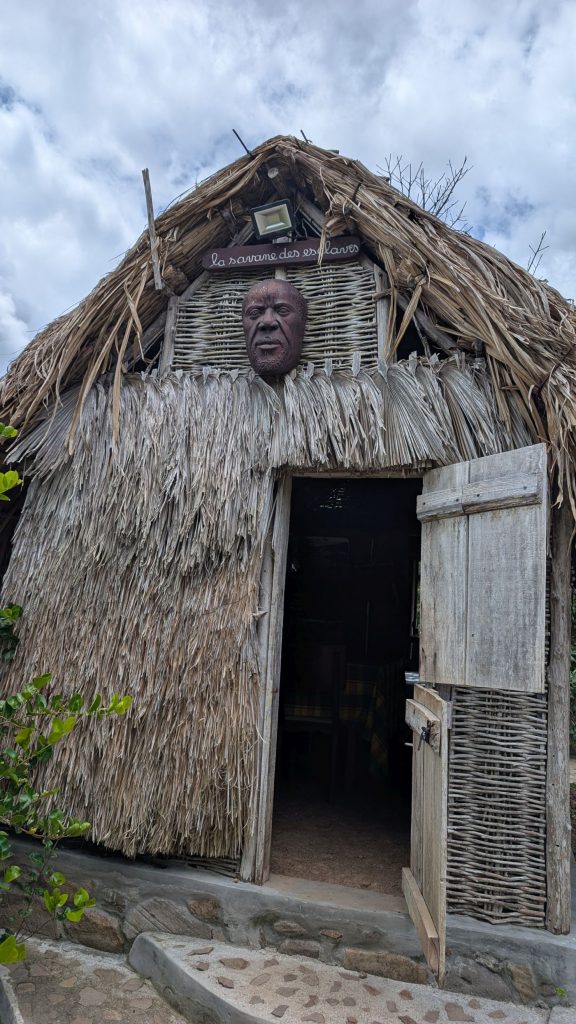
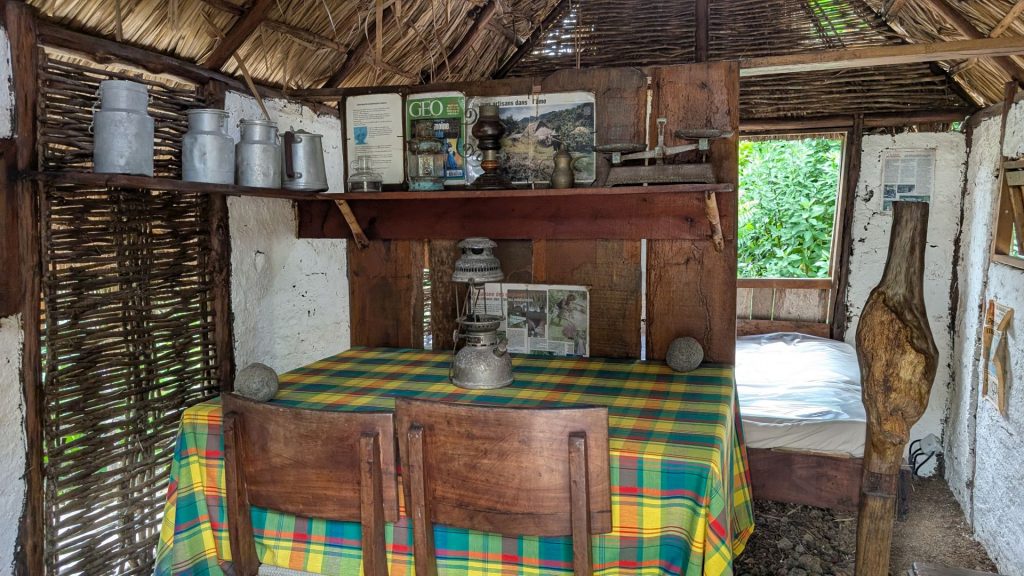
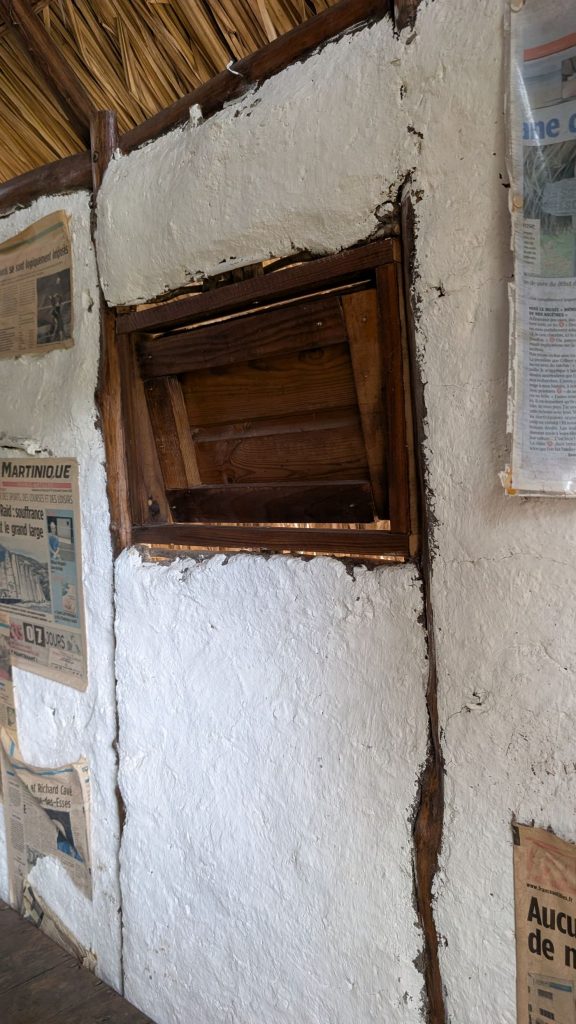
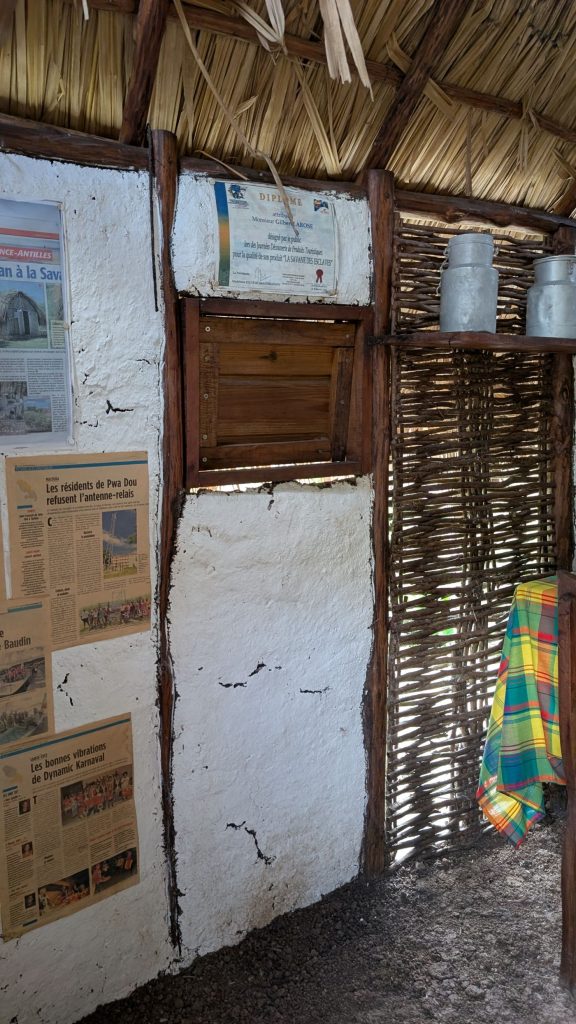
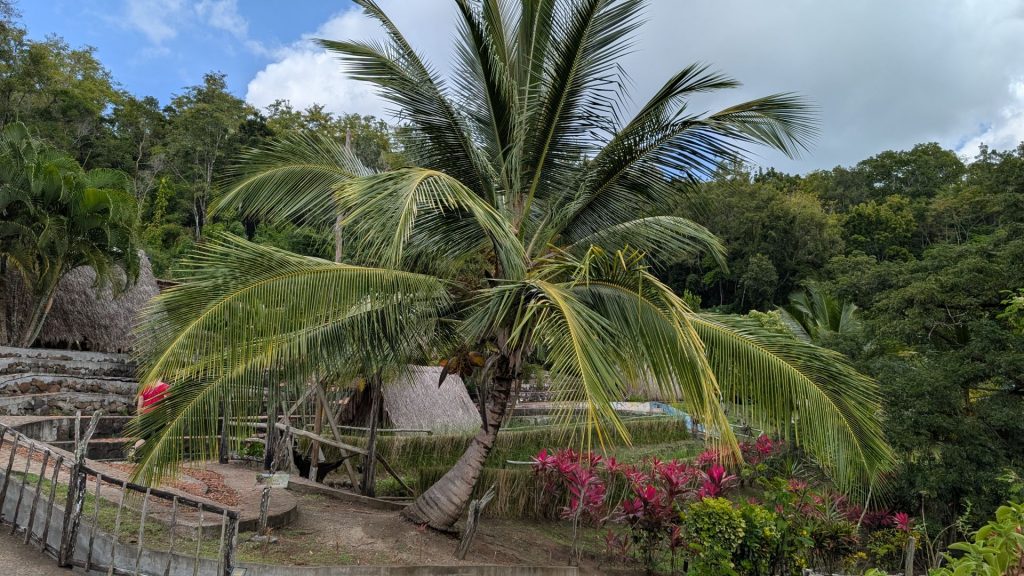
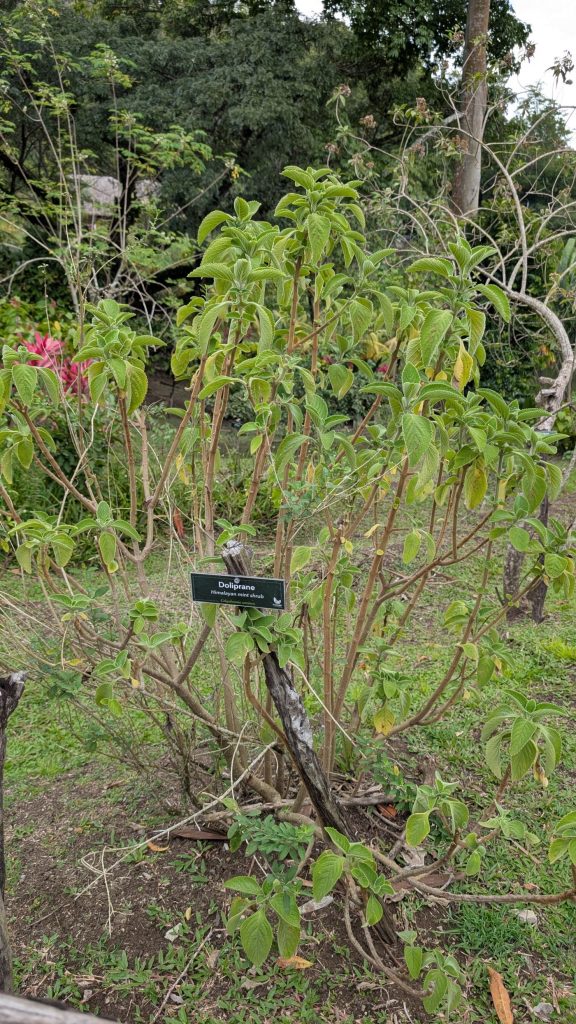
Le Village Kalinago
This village is devoted to the life and customs of the first native inhabitants of the island, prior to the arrival of the European settlers.
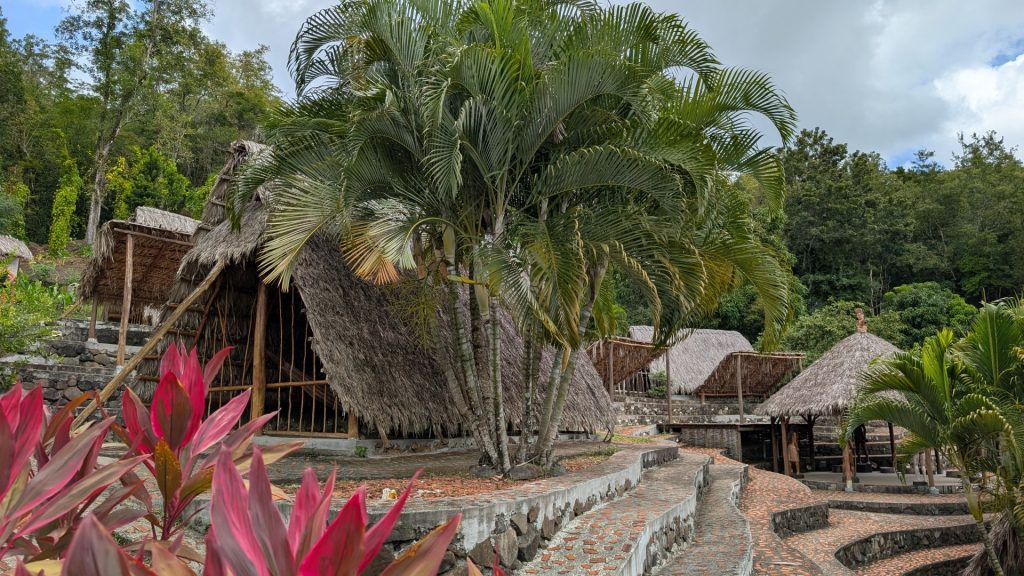
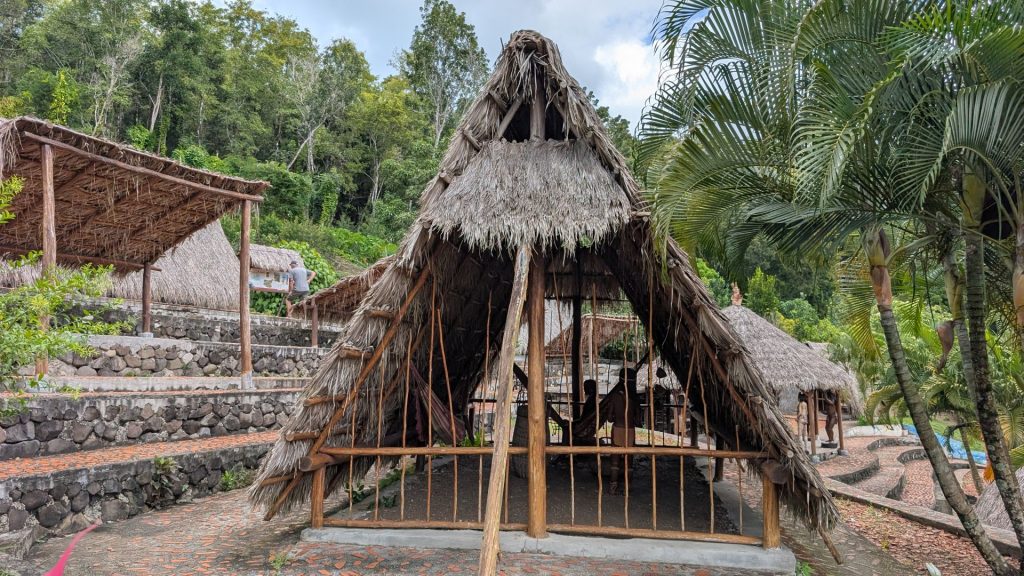
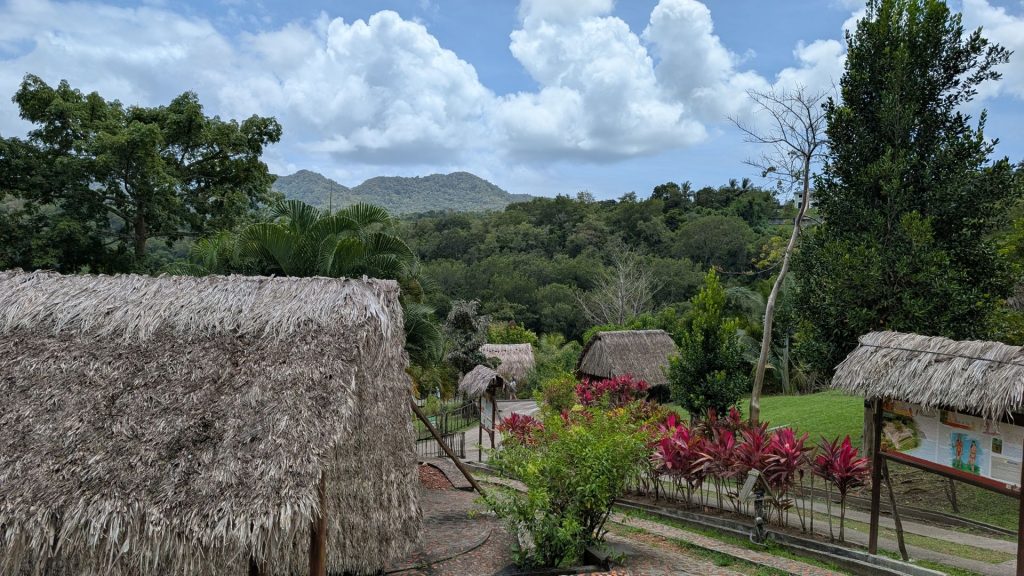
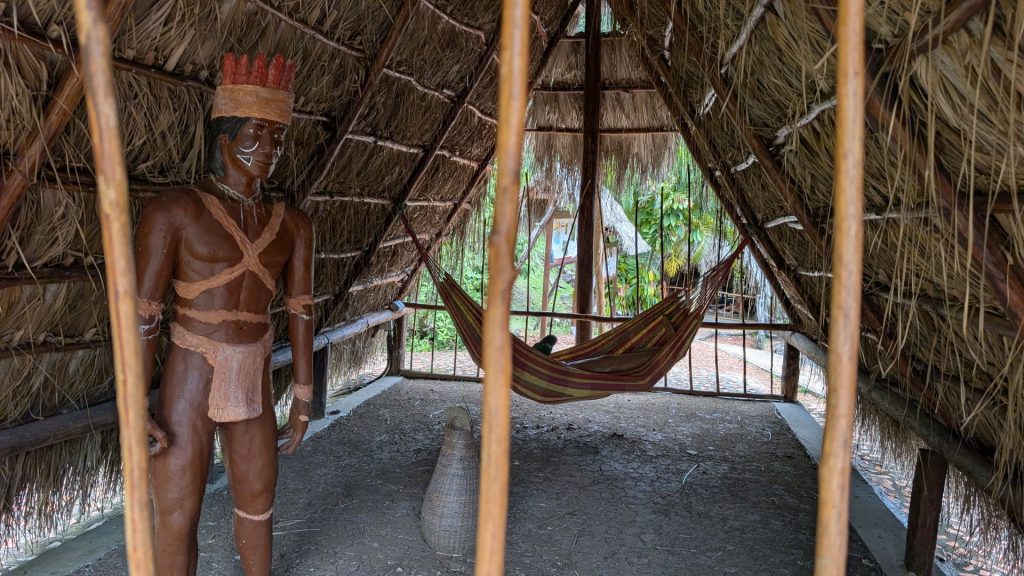
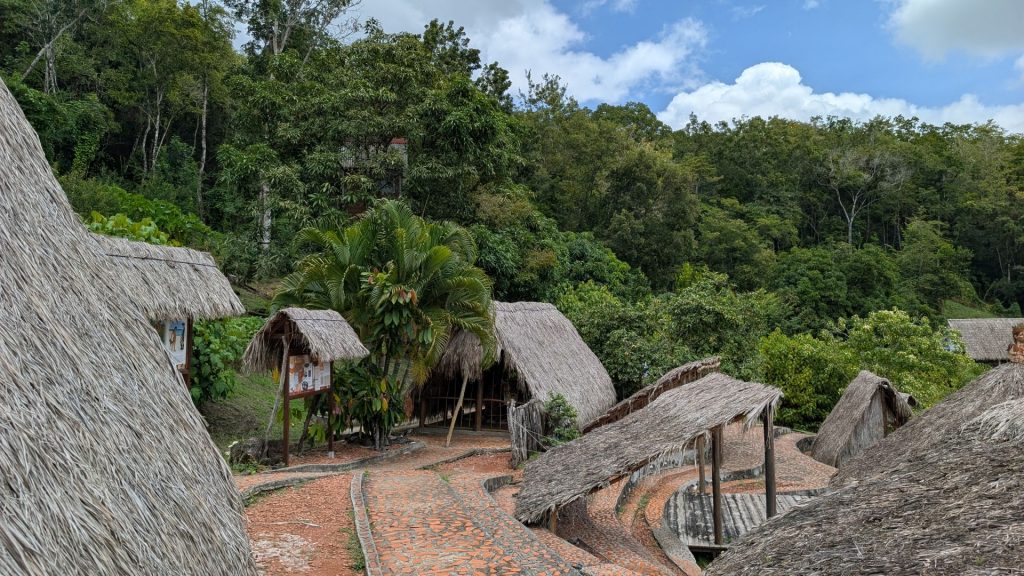
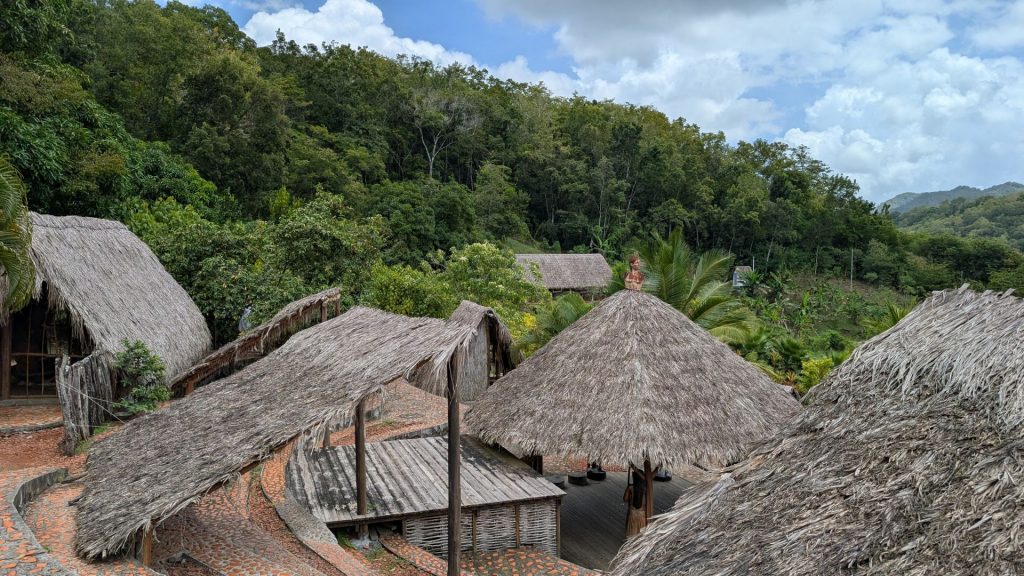
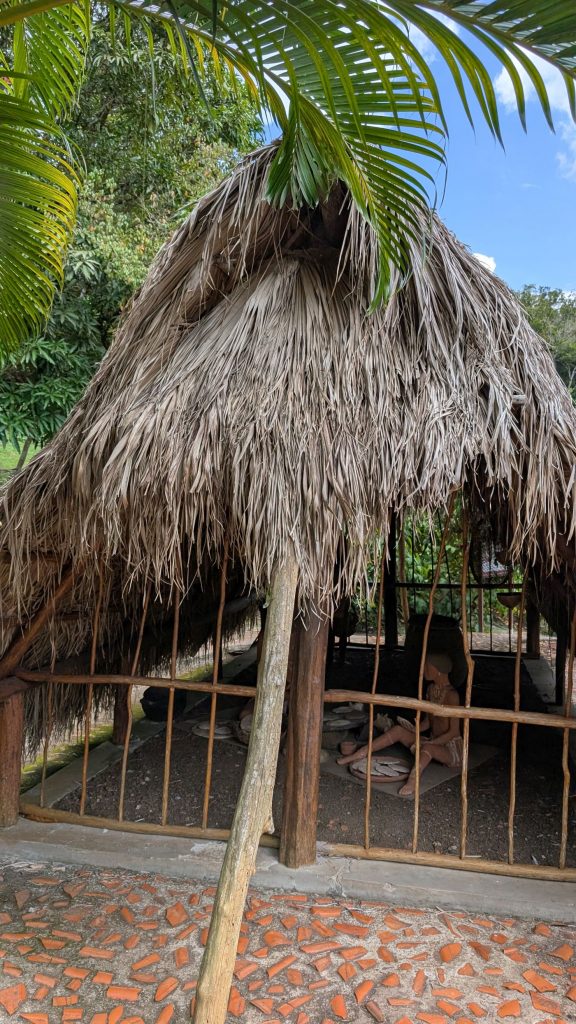
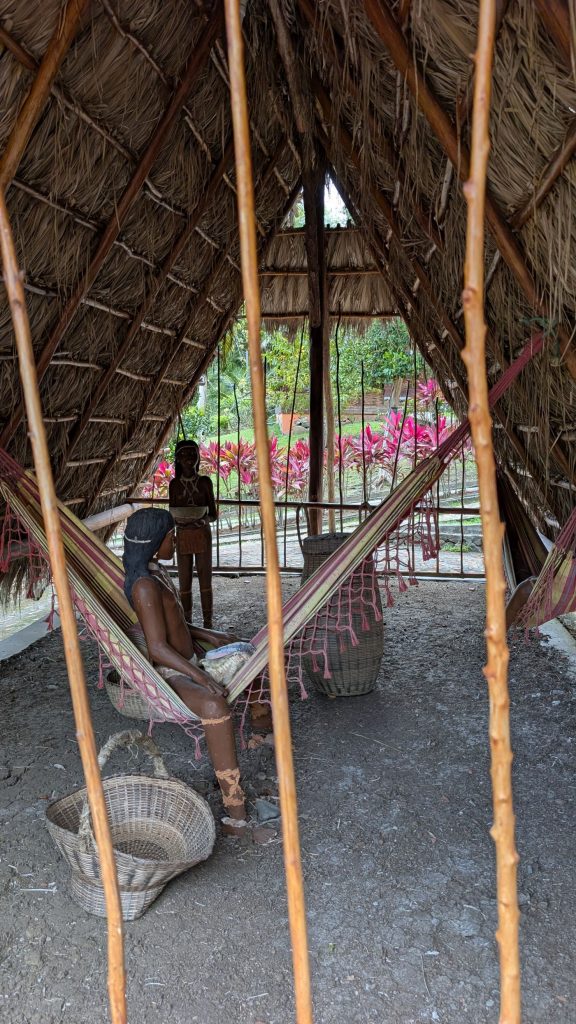
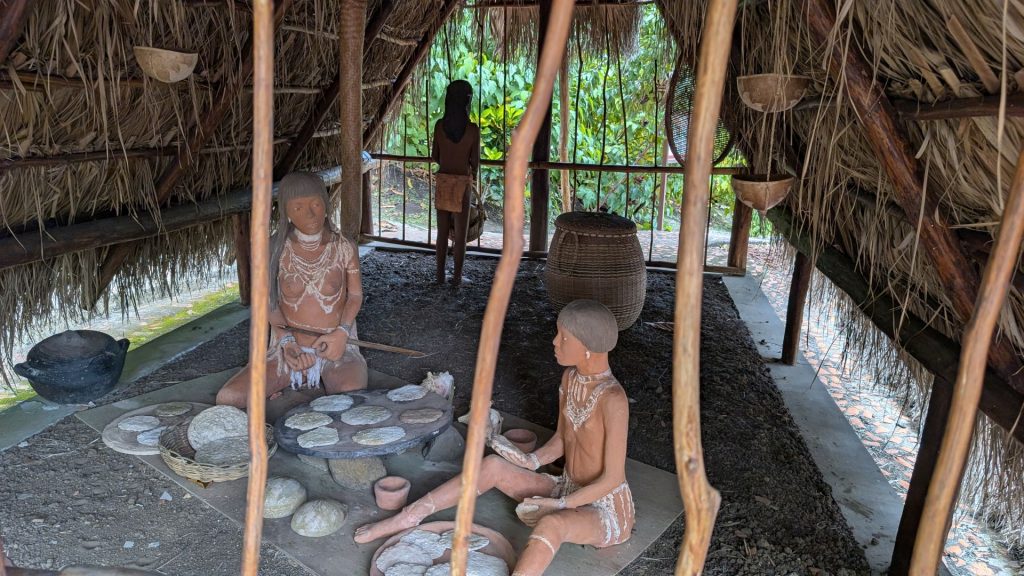
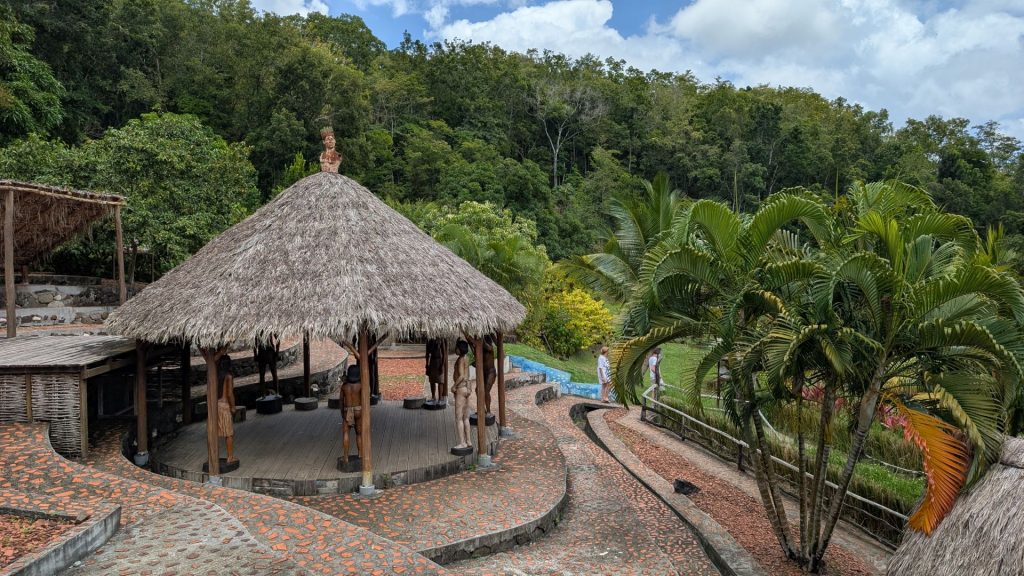
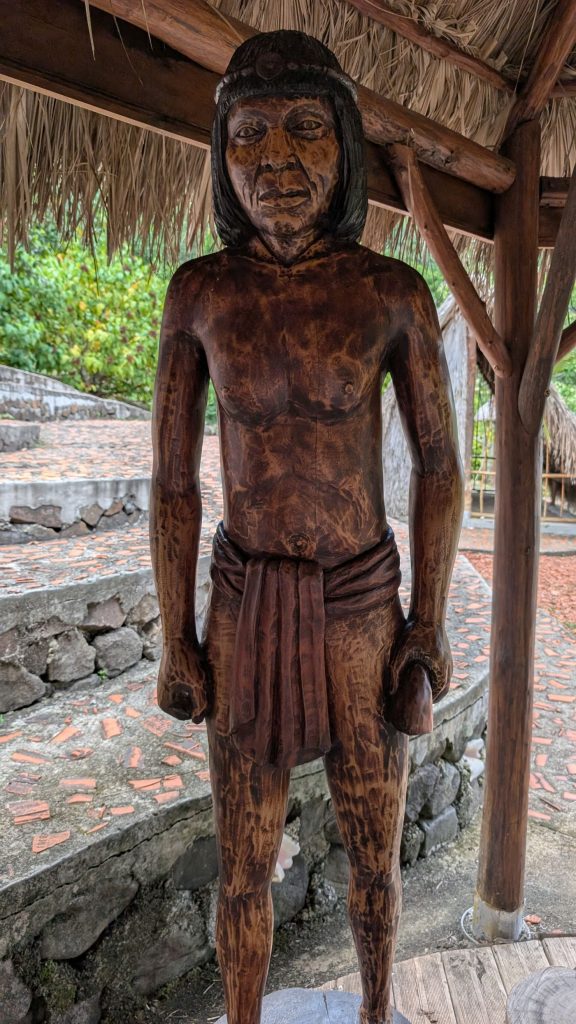
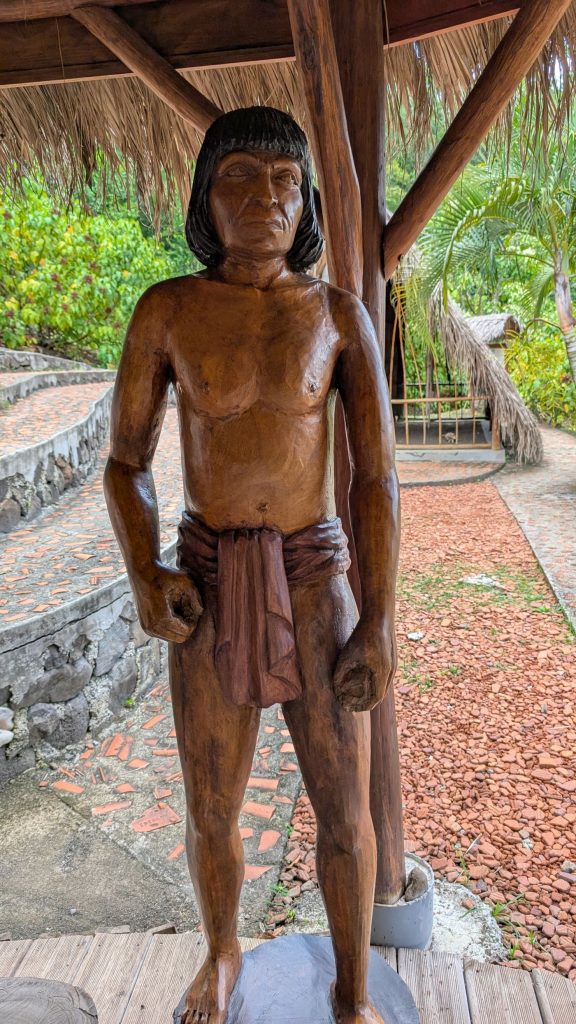
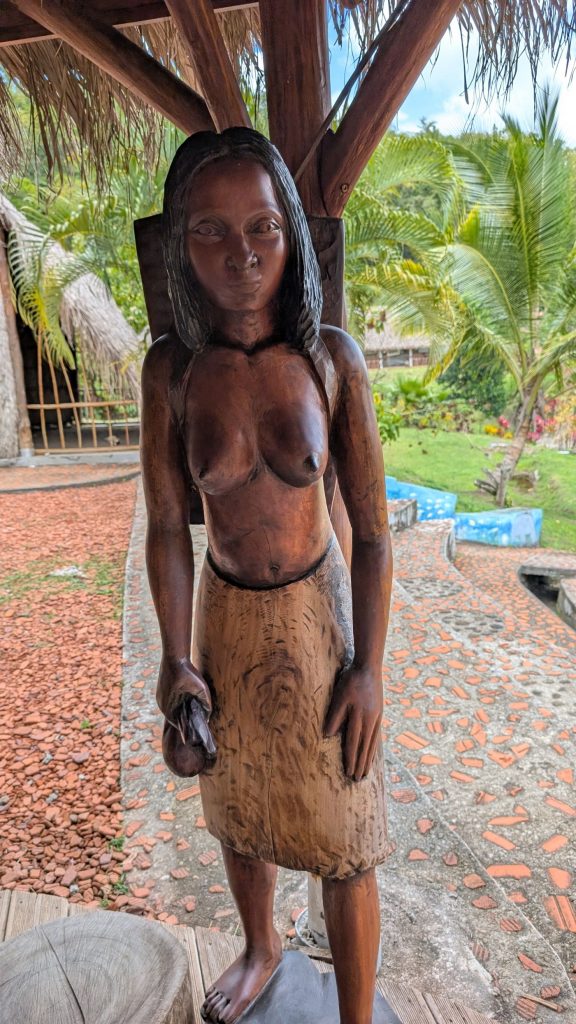
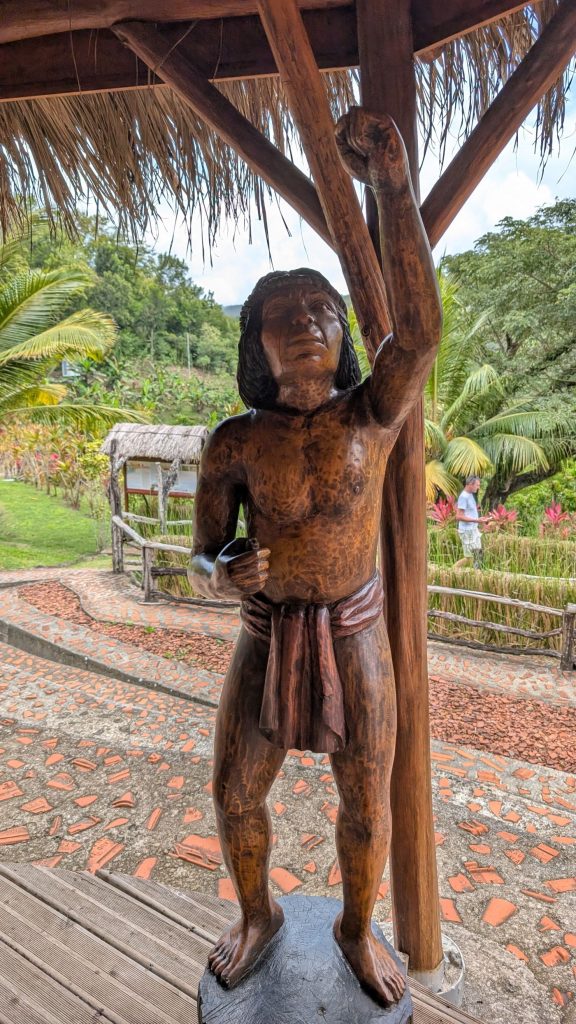
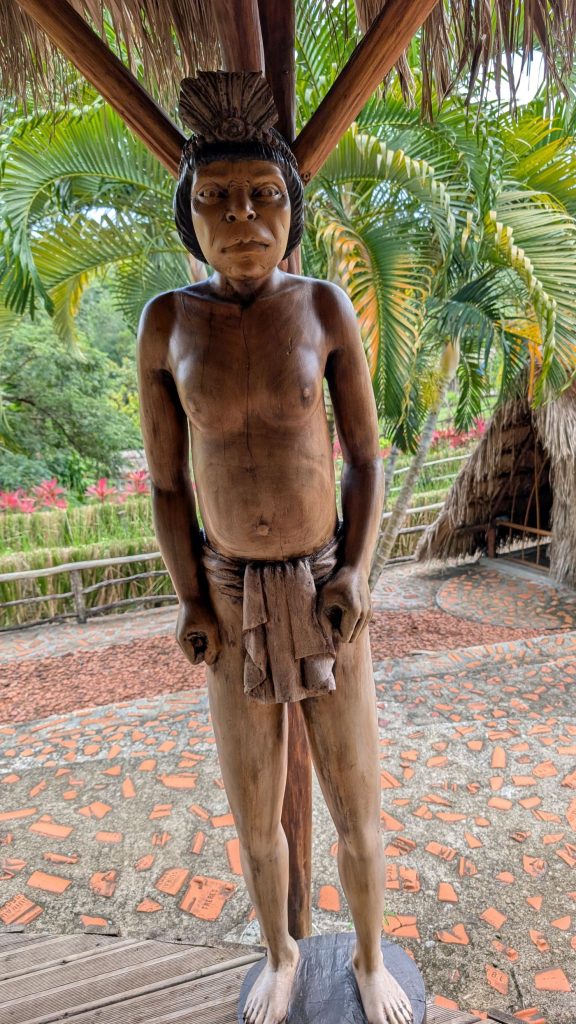
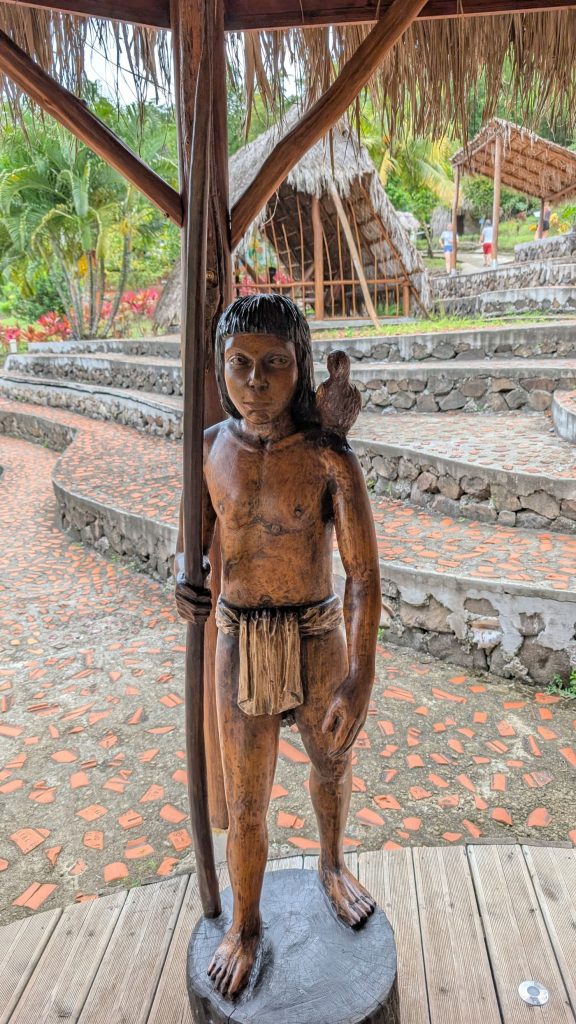

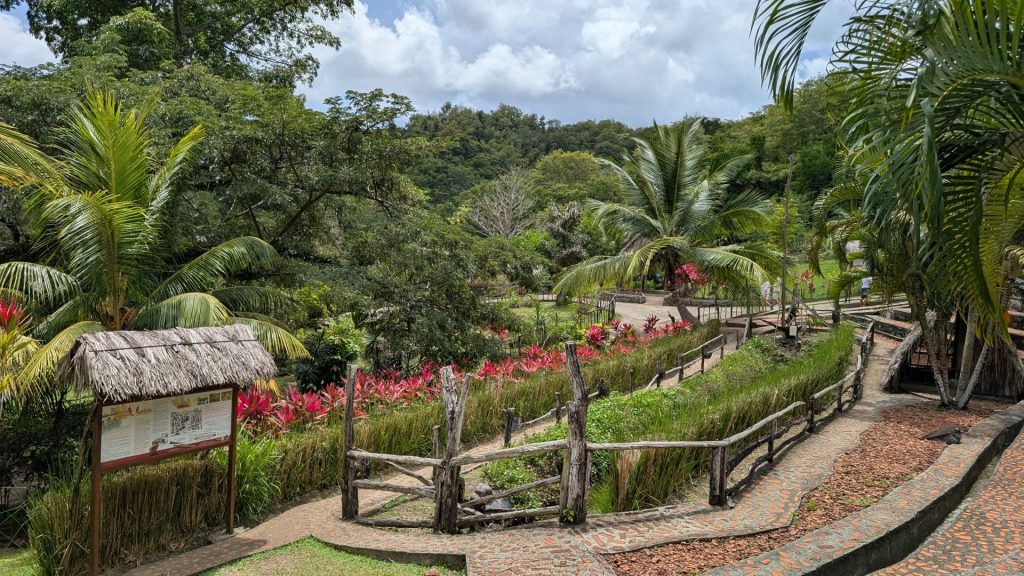
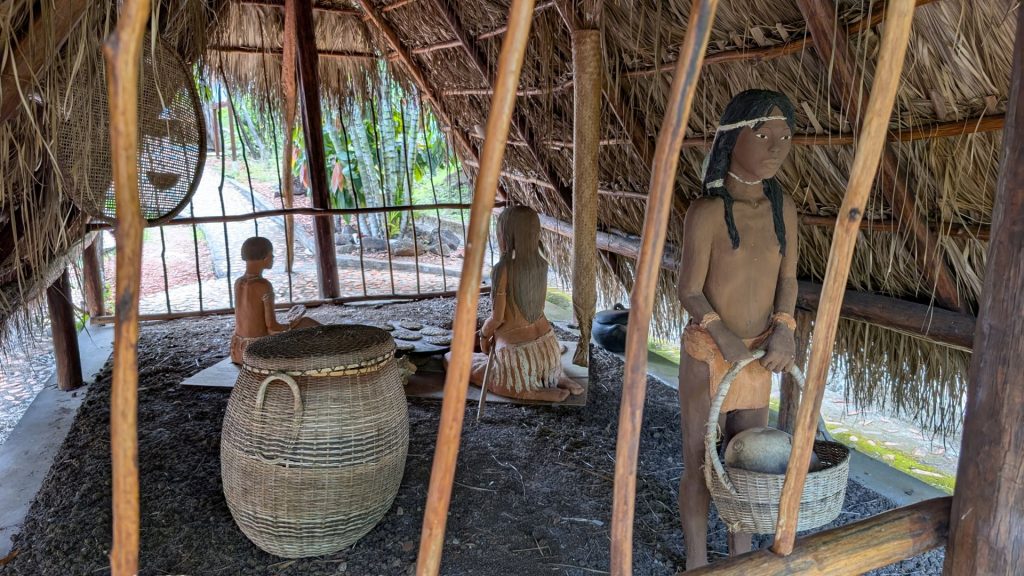
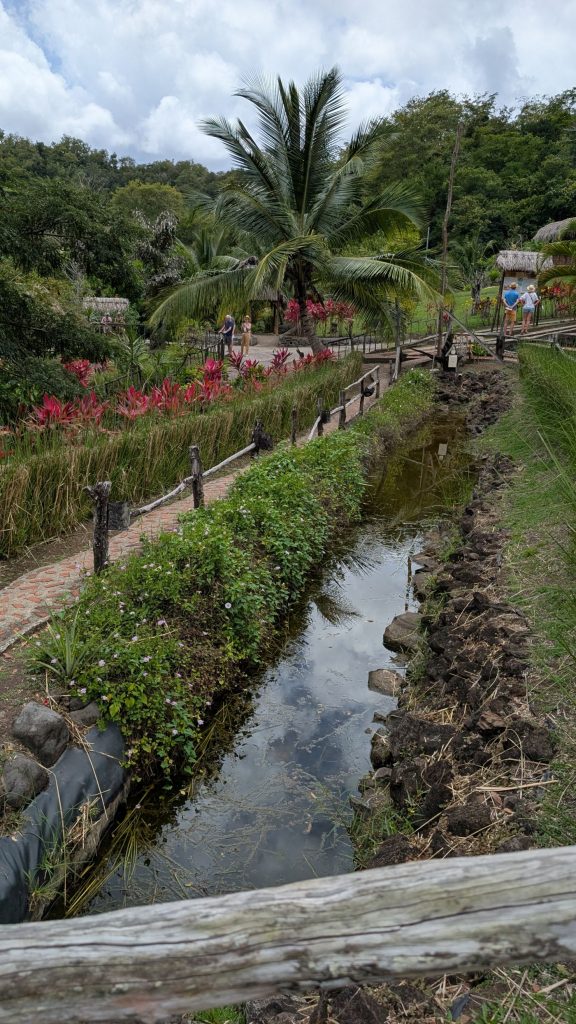
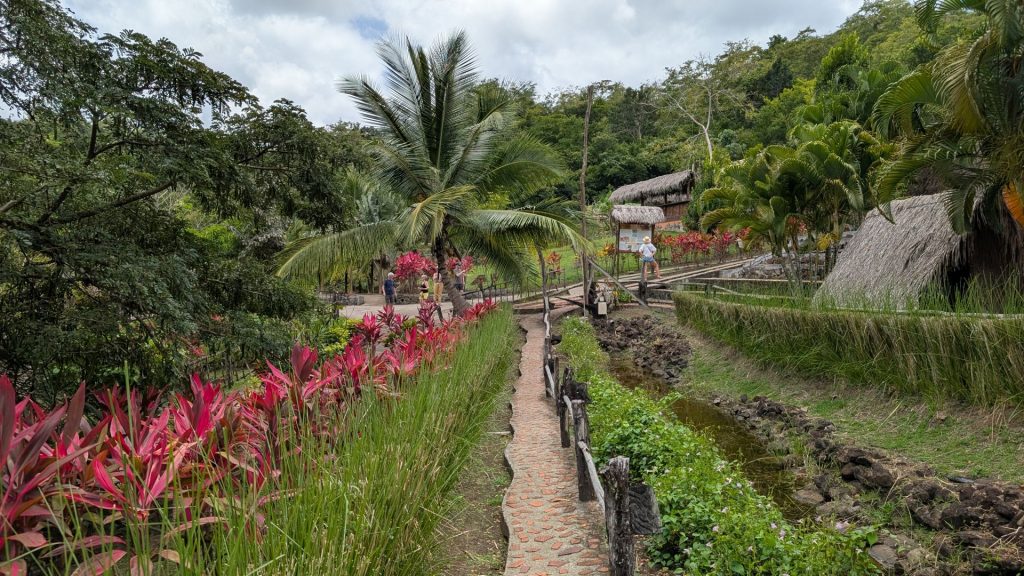
Medicinal Garden
I am not sure if these are all pictures of the medicinal garden or whether some of the pictures above are actually of the medicinal garden. (I kind of took a lot of pictures!) That said, there was definitely a medicinal garden. What I found most interesting were the descriptions of the plants and their medicinal uses. (Maybe because I am not a follower of such things.) I have long known that plants have been used for medicinal purposes for thousands (perhaps 60,000) of years. I think it is cool that people figured out how to use them. I have also wondered how many people got sicker or died when a plant not known to be poisonous was tested.
Here are quite a few examples:
Zeb Tension (St. John’s Bush): A rich source of iron, can be used to treat anemia. Leaves made into tea lowers blood pressure.
Gros Thym (Big Thyme): Used as an antiseptic for insect bites or in a tea to treat bloating. Also used in cooking as a spice.
Guéri Tout (Sweetscent): Like shell ginger, it treats many illnesses; headache, the flu, stomachache.
Brisée (Bushy Lippia): Used to treat cold or flu symptoms.
Médicinier béni (Barbados Nut): The poisonous seeds are crushed and mixed with water to use as an antiseptic and to help heal the skin. The leaves heated in water are anti-inflammatory.
Doliprane (Doliprane): To treat headaches.
Citronnelle (Lemongrass): Often used to treat indigestion, colds, the flu, a cough, or fever.
Orthosiphon ou babin’chat (Orthosiphon): Also called Cat’s Whiskers it has a diuretic effect known to help in dieting. (I can’t imagine that the Caribs were worried about dieting, so this must be a more modern application!)
Roseau de Indes (Cabbage Palm): Made into a poultice it’s used to heal wounds. Young leaves are made into a tea to relieve menstrual cramps.
Verveine Blanche (Jamaica Vervain): Treats insomnia, stress, and upset stomach.
Chadron Béni (Long Coriander): A bitter plant used to treat high fevers, can be used in cooking to replace cilantro.
Cassia Alata (Popcorn Senna): The juice from the crushed leaves is used to treat many skin conditions such as heat rash, fungal infections, acne, and herpes.
Coquelicot Rouge (Chinese Hibiscus): The flowers are used in an infusion to treat the flu or a cough with mucus. Not to be consumed by pregnant women.
Basilic (Sweet Basil): Stimulates appetite and helps aid in digestion. Used to relieve stress, treat colds, and bloating.
Aloe Vera (ditto): Used to treat sunburns, also helps heal wounds when the gel is applied directly to the skin.

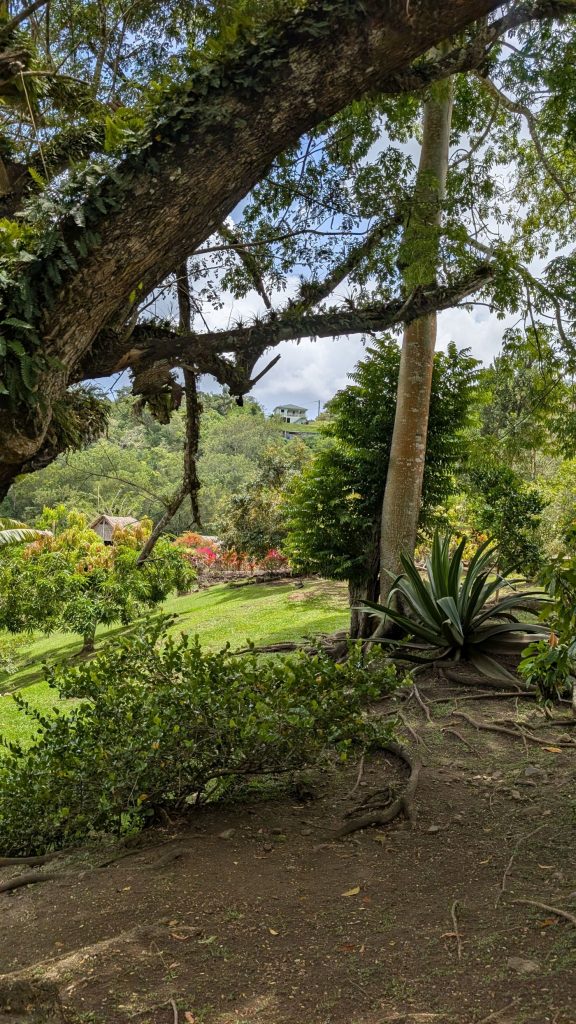

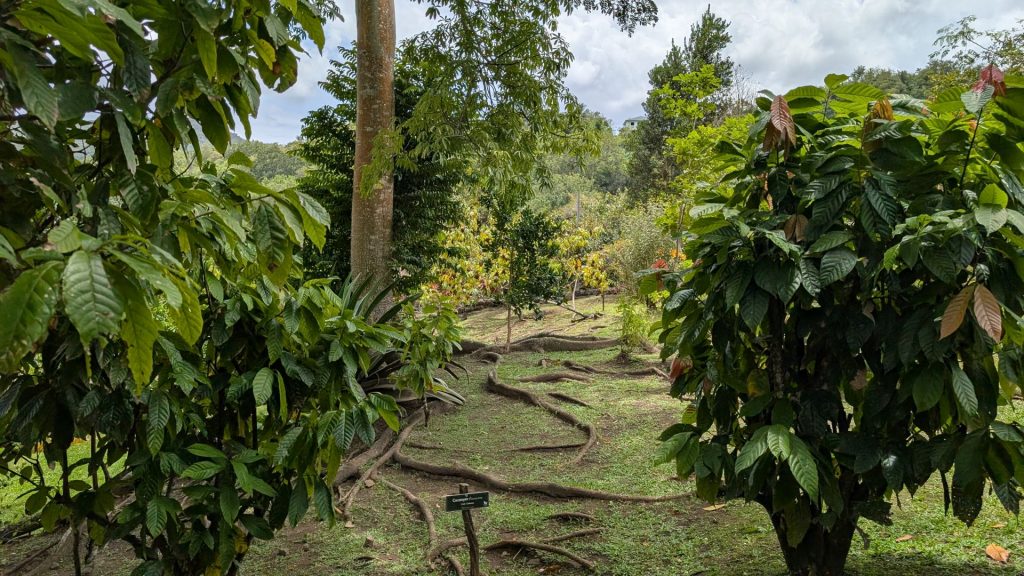
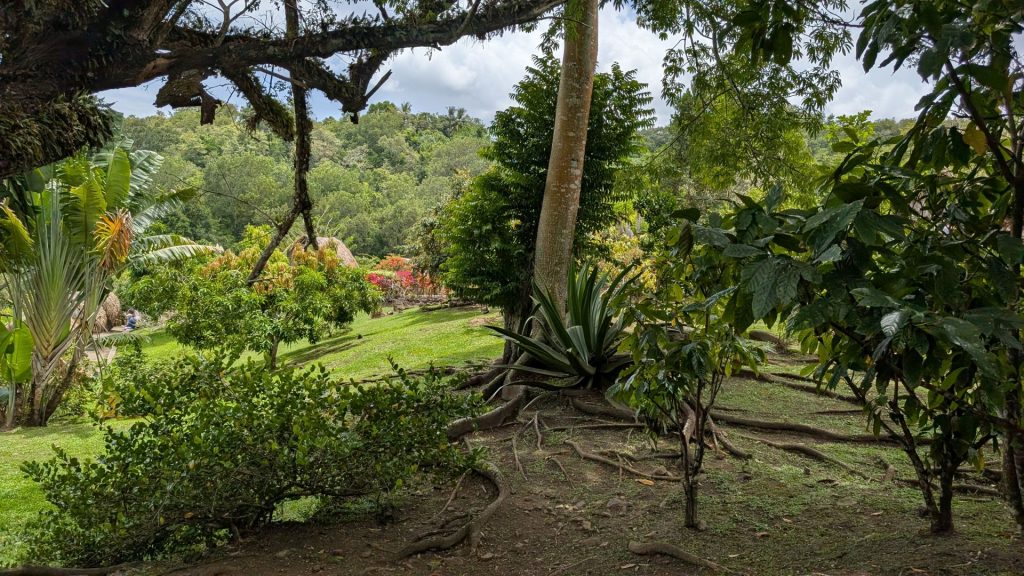
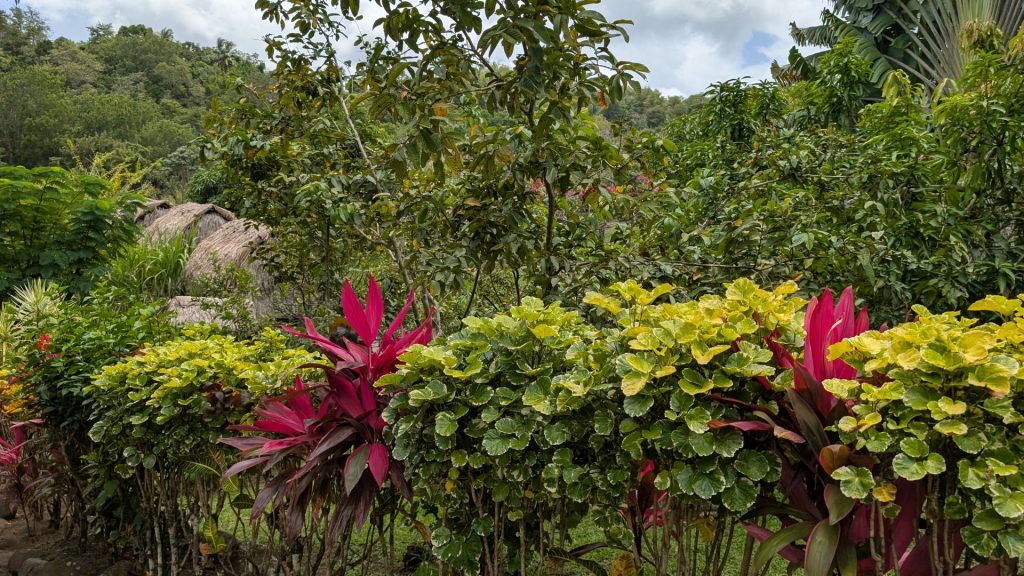
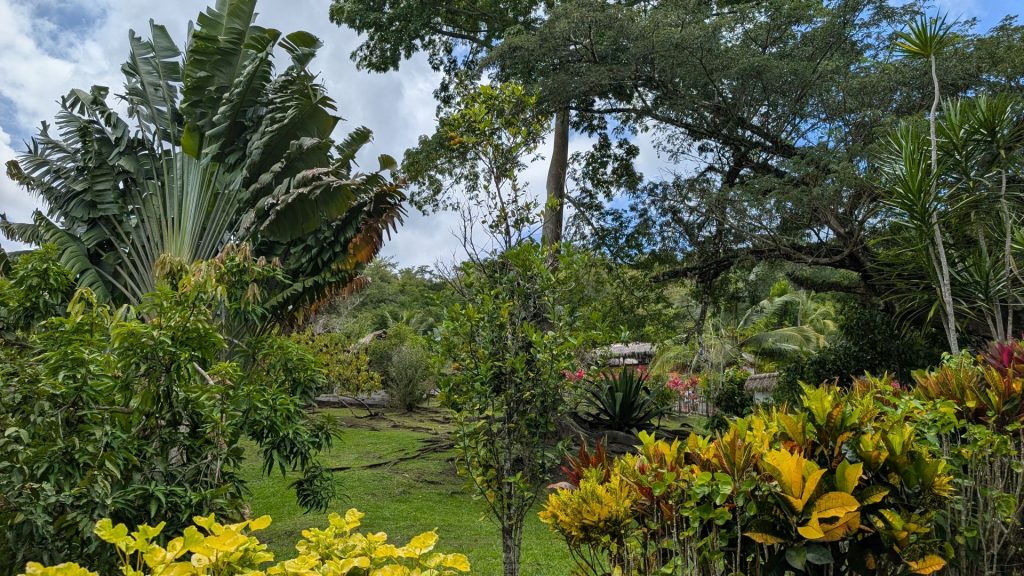
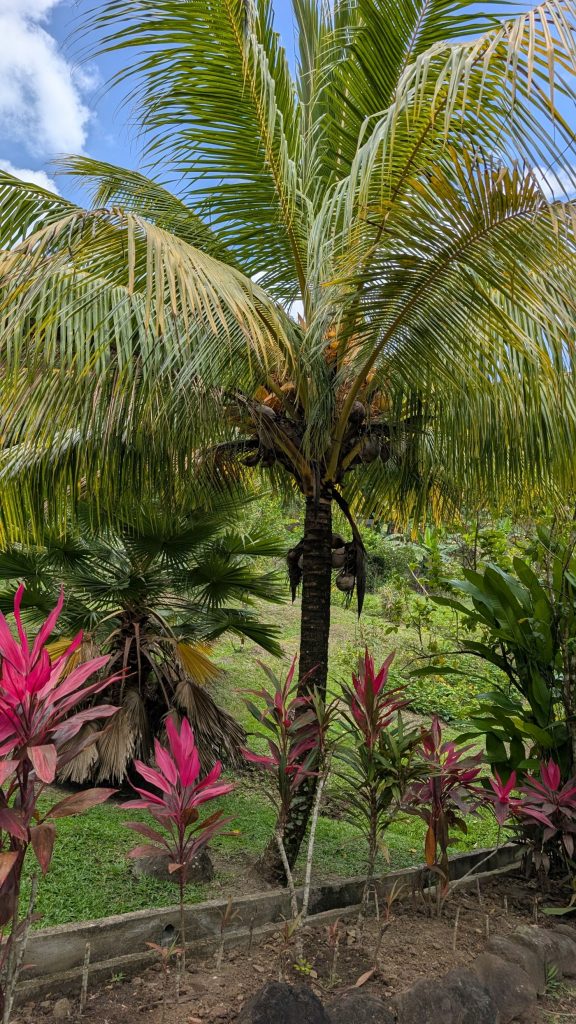
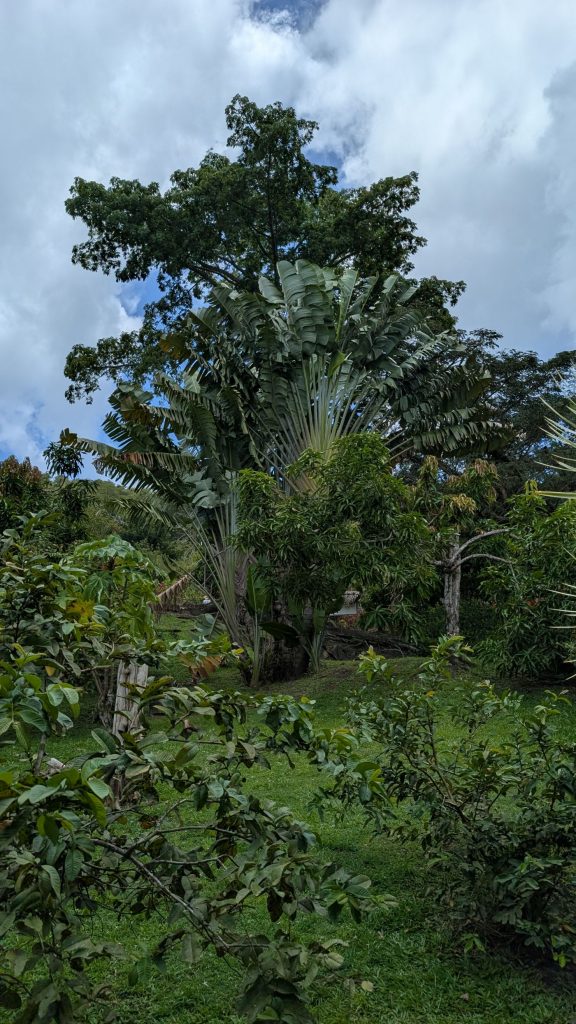
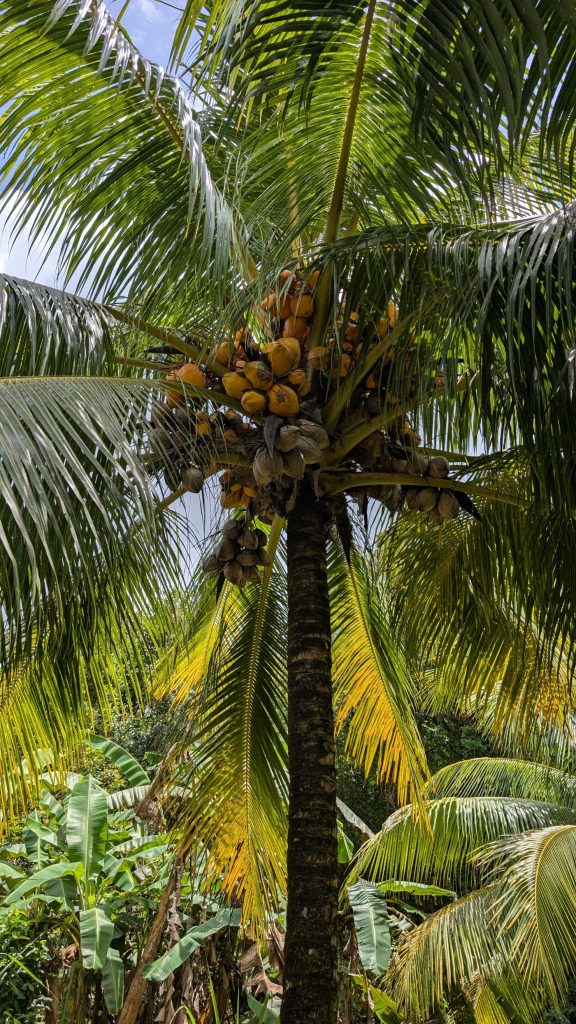
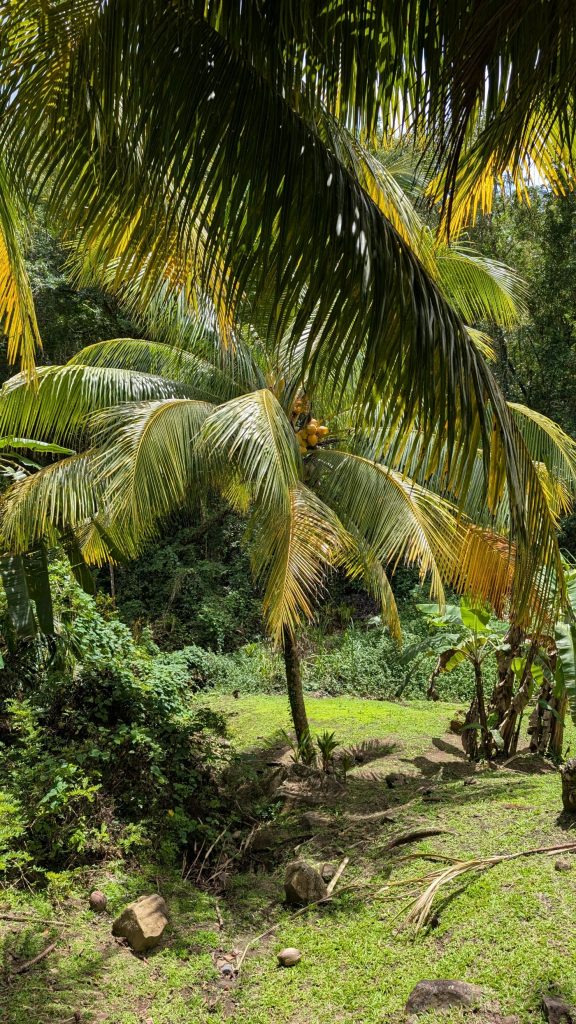
Here are some aerial pictures of the property:
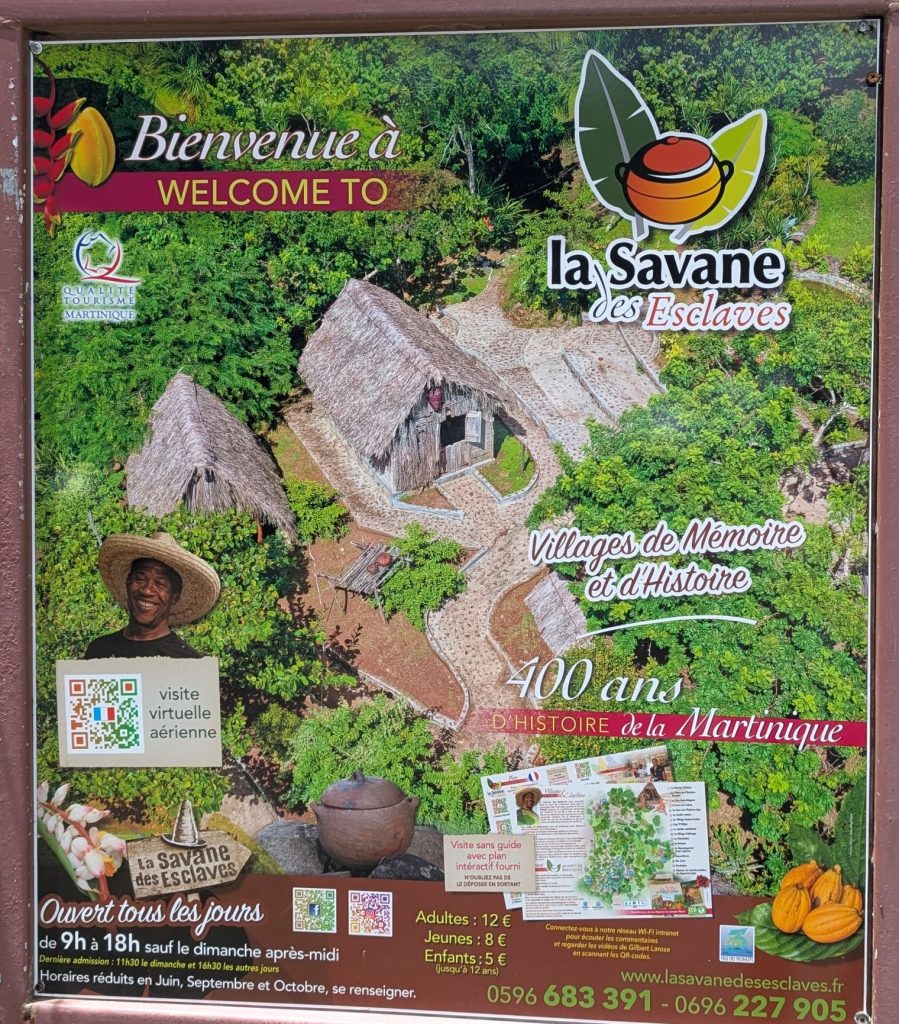
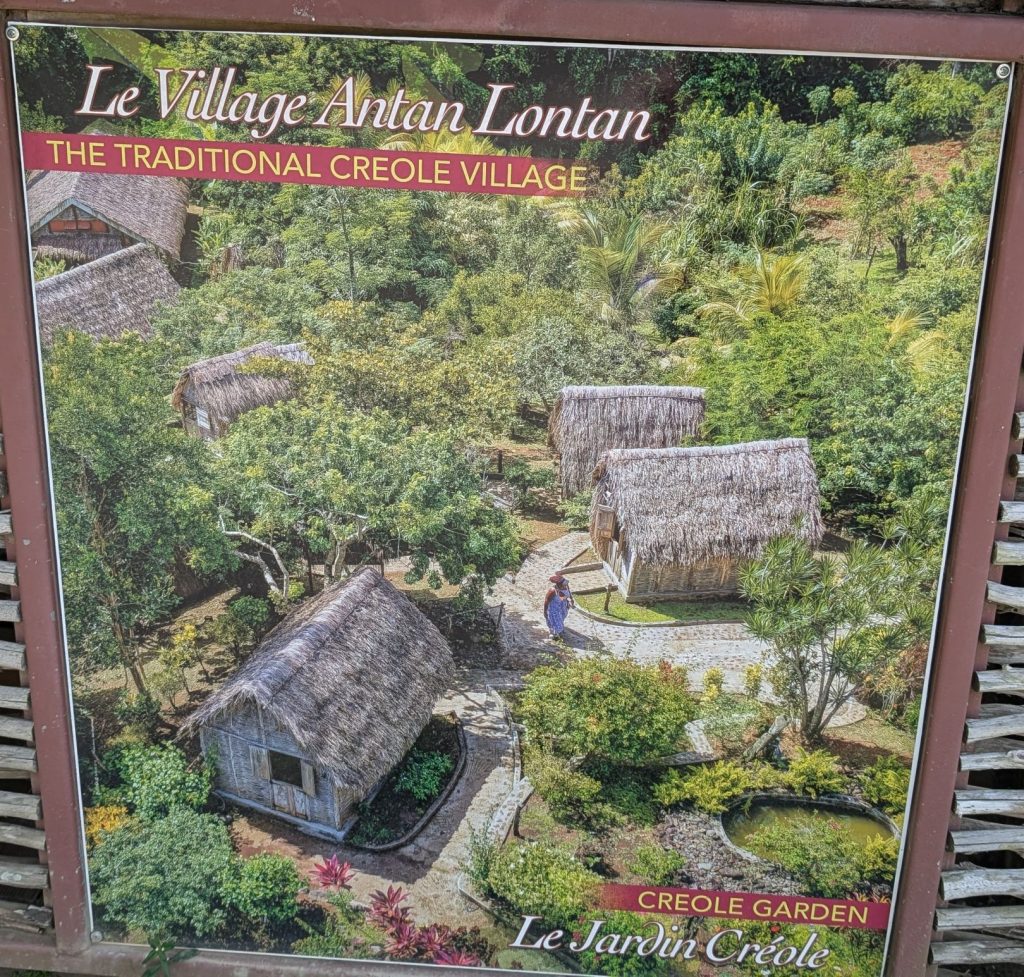

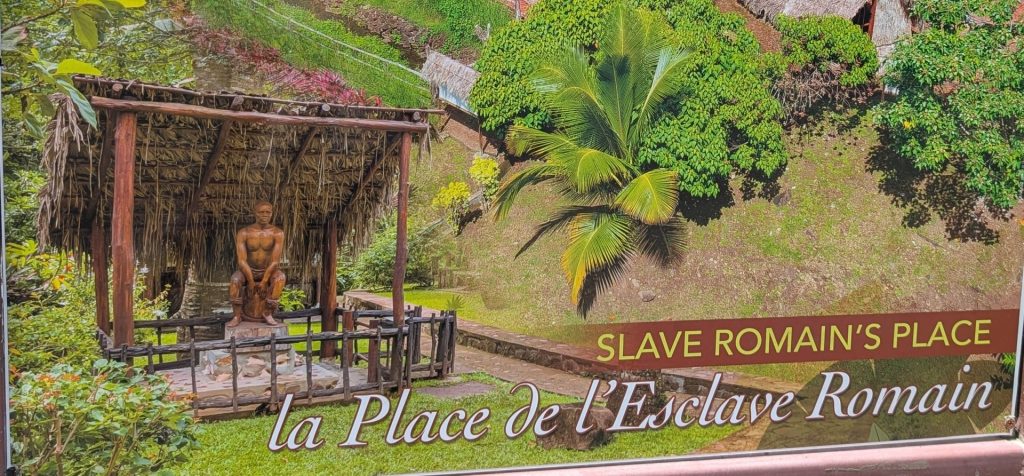
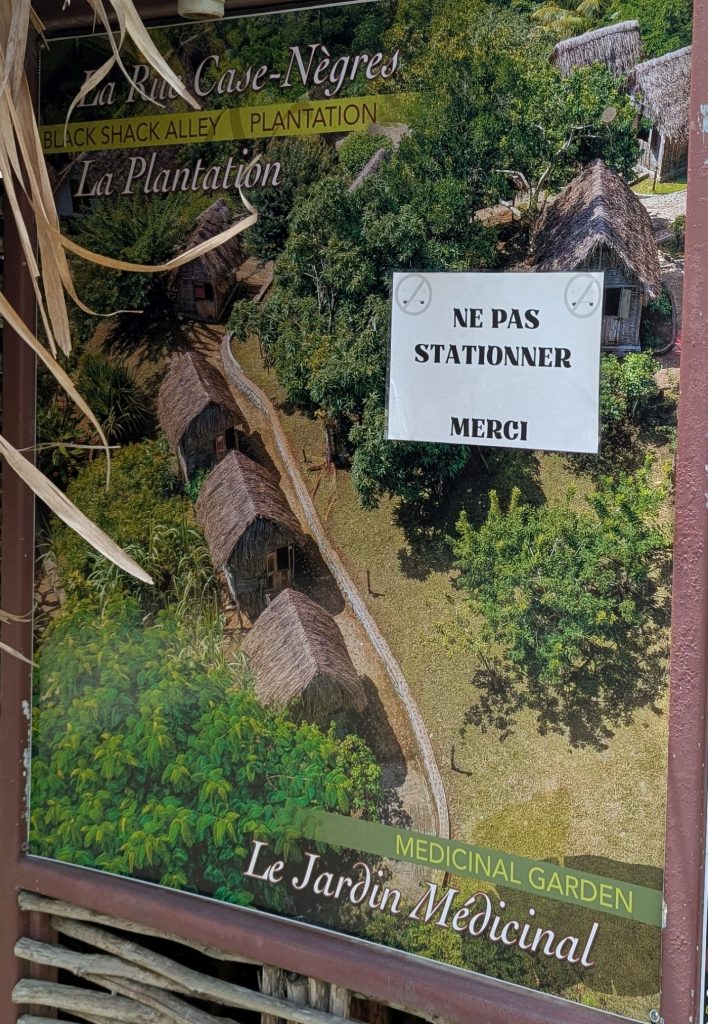
There are a number of informative signs throughout the property. There are waaaaay too many to share, but I am sharing some of them I found to be quite interesting about the daily life of the Caribs.
A word about Caribs:
The first inhabitants of Martinique were the Arawaks, a peaceful people who made their living fishing and gathering. The Caribs from South America then arrived in Martinique, killing all the Arawak men but sparing the women. This was the first example of race mixing, between the Carib men and the Arawak women. The Caribs settled and took control of the island.
- Pre-Columbian Era:
The island was inhabited by Arawaks and Caribs before the arrival of Europeans. - Name and Identity:
The Caribs, also known as Kalinago or Island Caribs, are a group of indigenous people from the Lesser Antilles in the Caribbean. - European Colonization:
The arrival of European settlers, particularly the French and Spanish, led to the decline and eventual disappearance of the Carib population in Martinique. - Conflict and Displacement:
Conflicts between the Caribs and European settlers, coupled with disease and assimilation, resulted in the displacement or elimination of the Carib population. - End of Carib Presence:
The Caribs were either exterminated or forced to leave Martinique, with some migrating to other islands like Dominica and St. Vincent.
The signs I am sharing largely provide information about the everyday life of the Caribs.


The sign about hair below also includes a picture of Gilbert Larose, the Martinican man with a passion for his island’s history, who built this outdoor museum. His picture appears on about every sign.
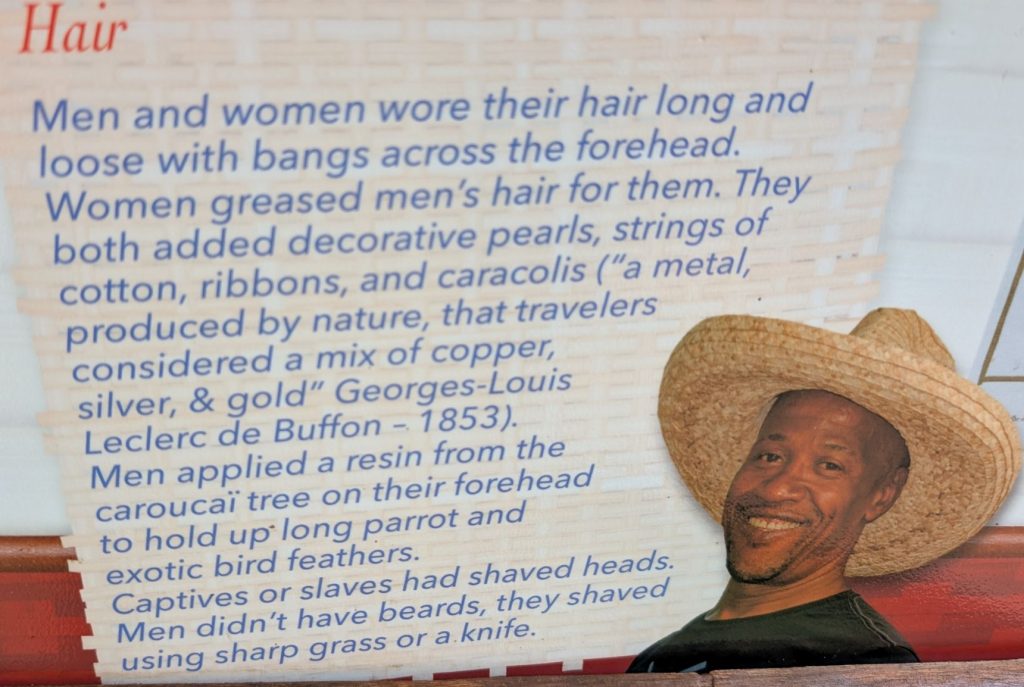
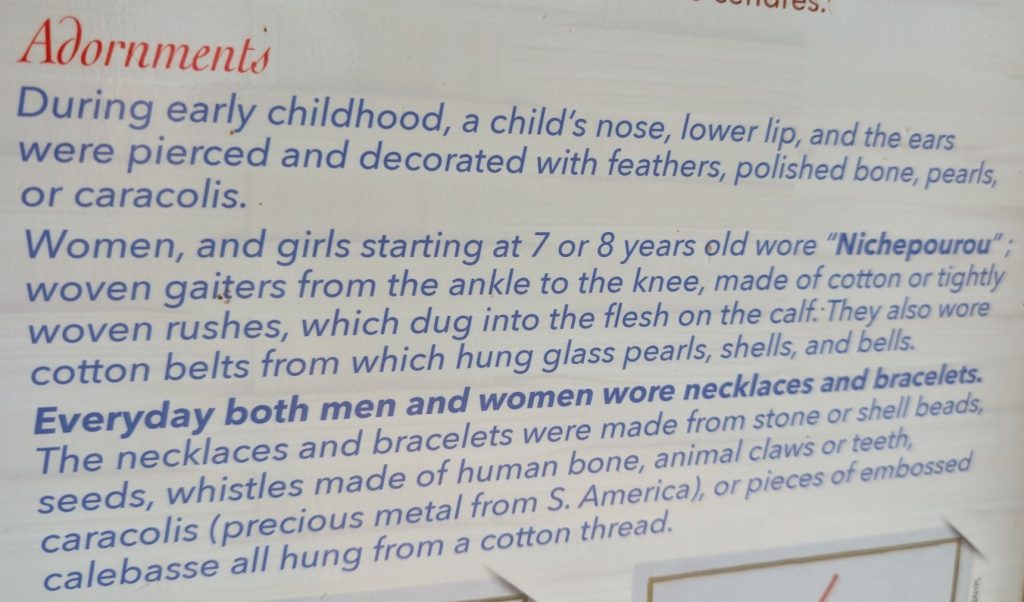
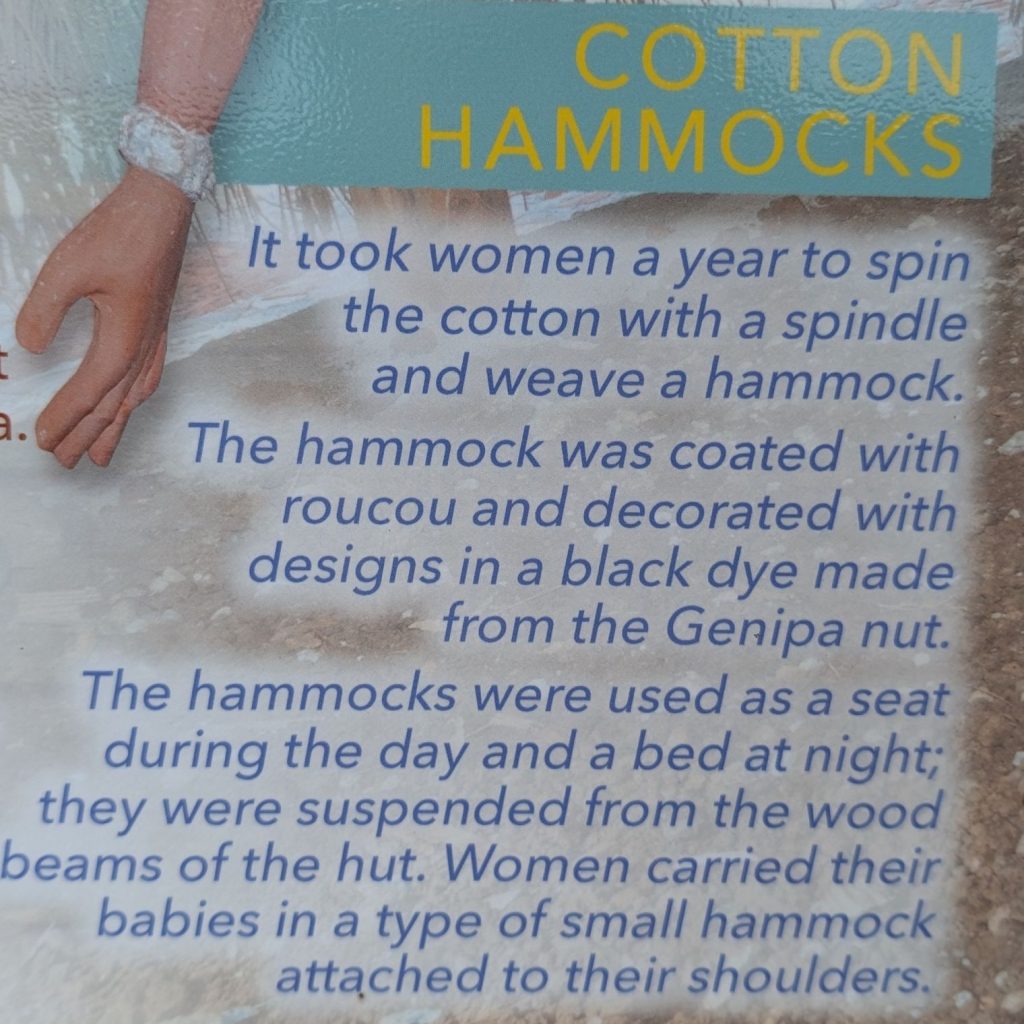
The recipe for Ouicou! Ew! 🙂 🙂
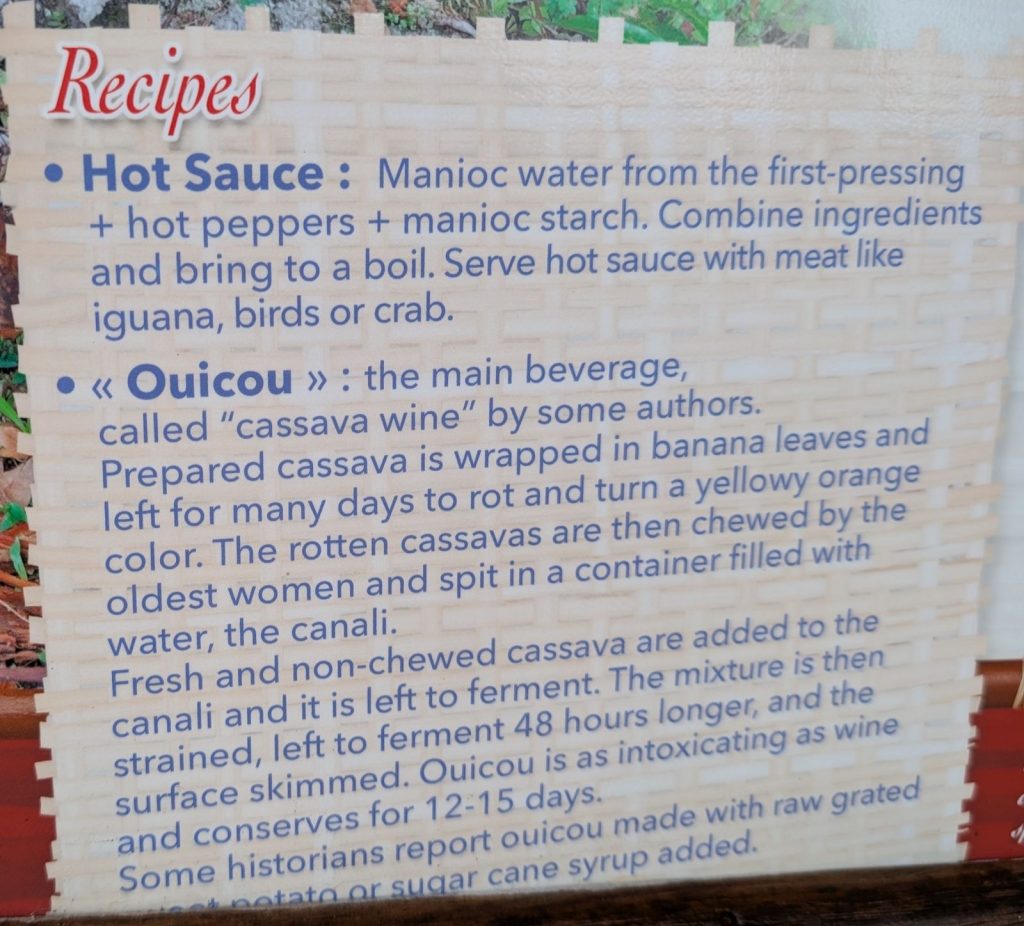


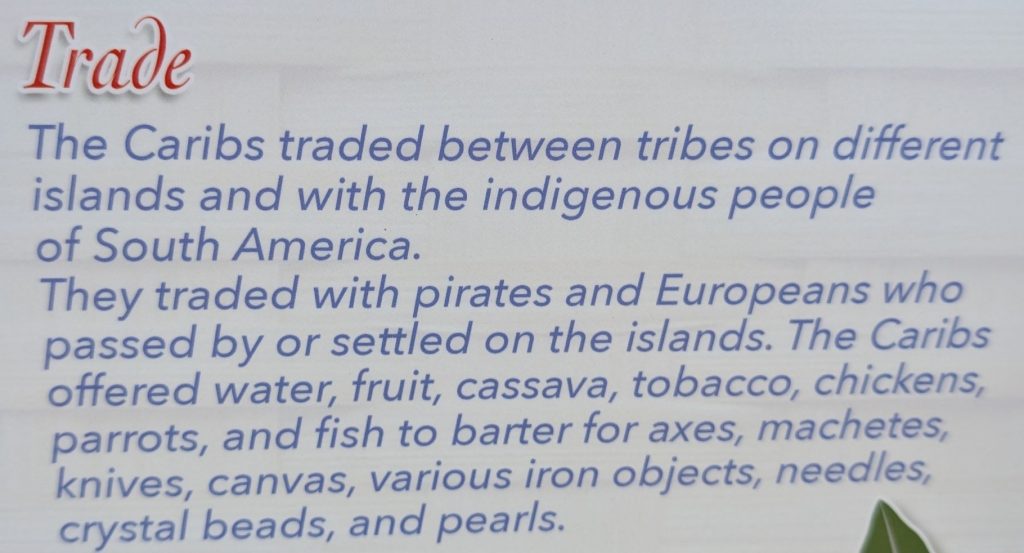
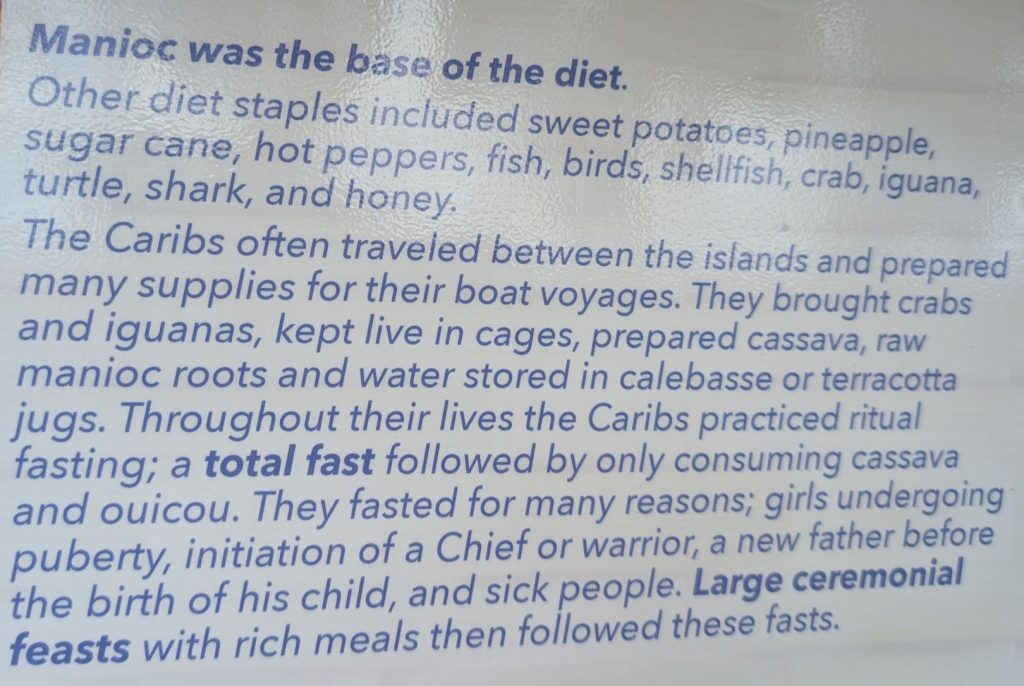
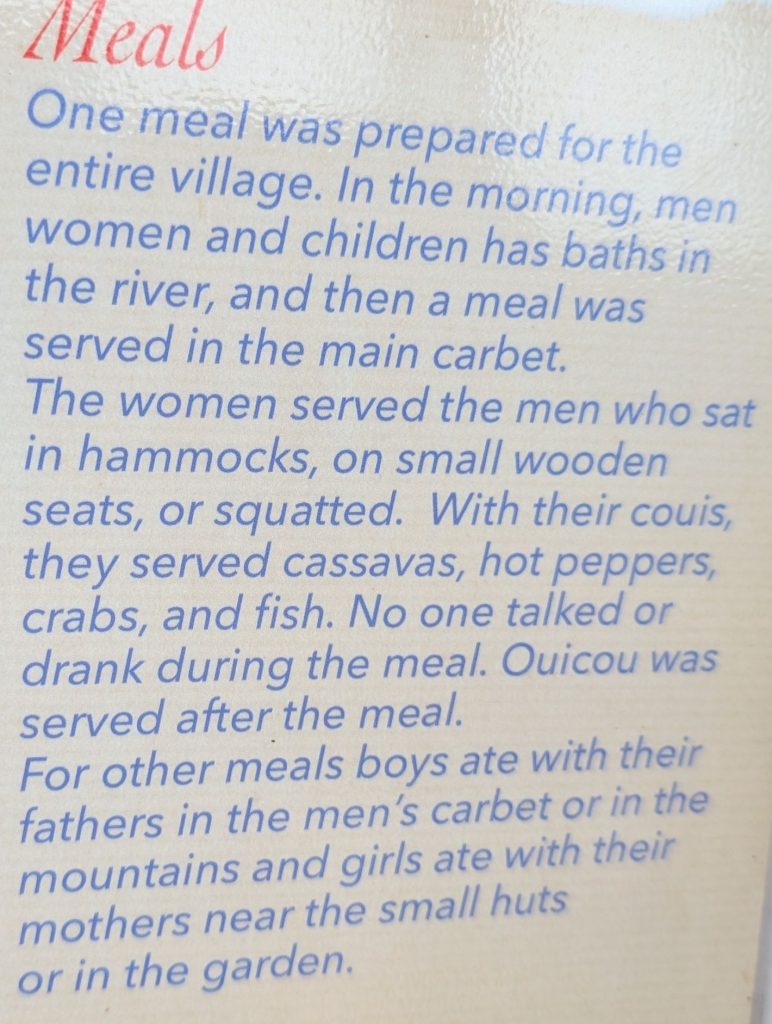
Shipping and Navigation:
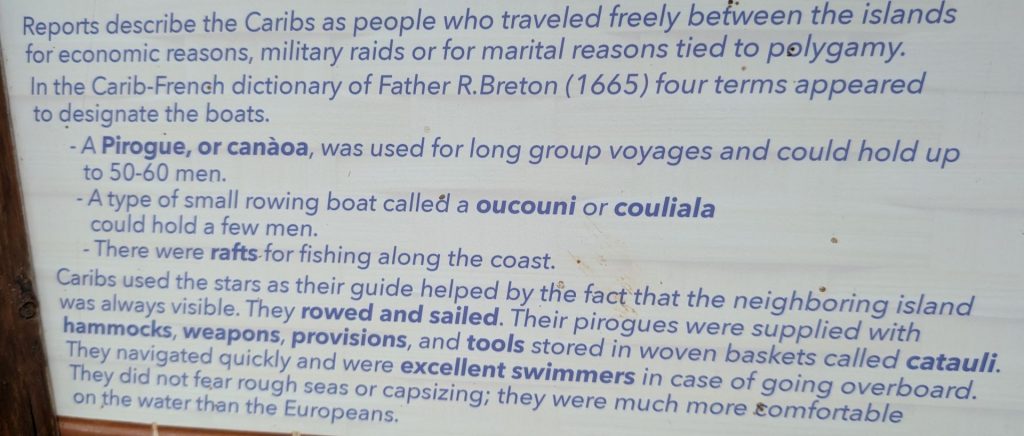
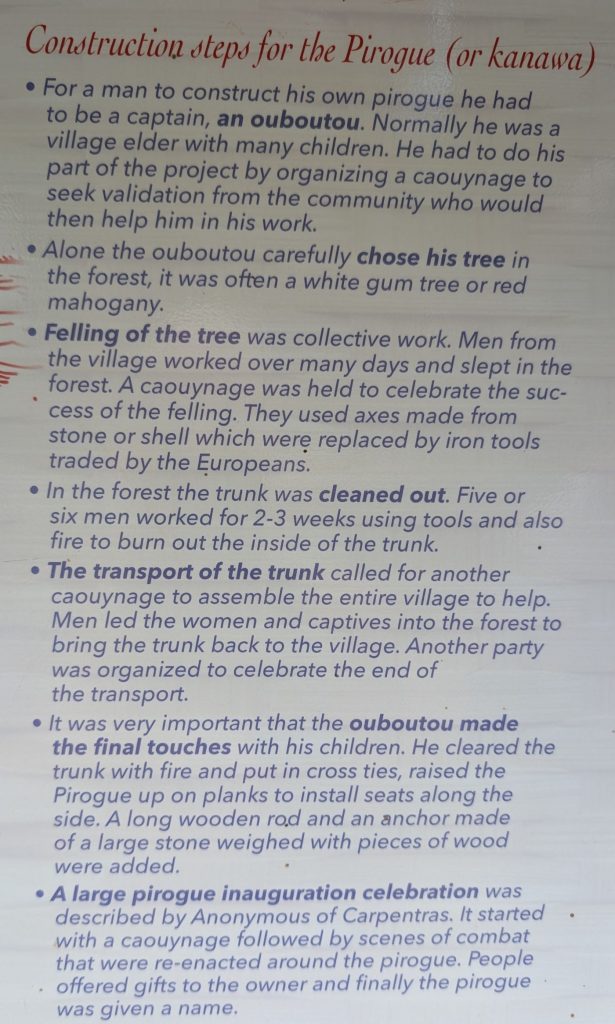
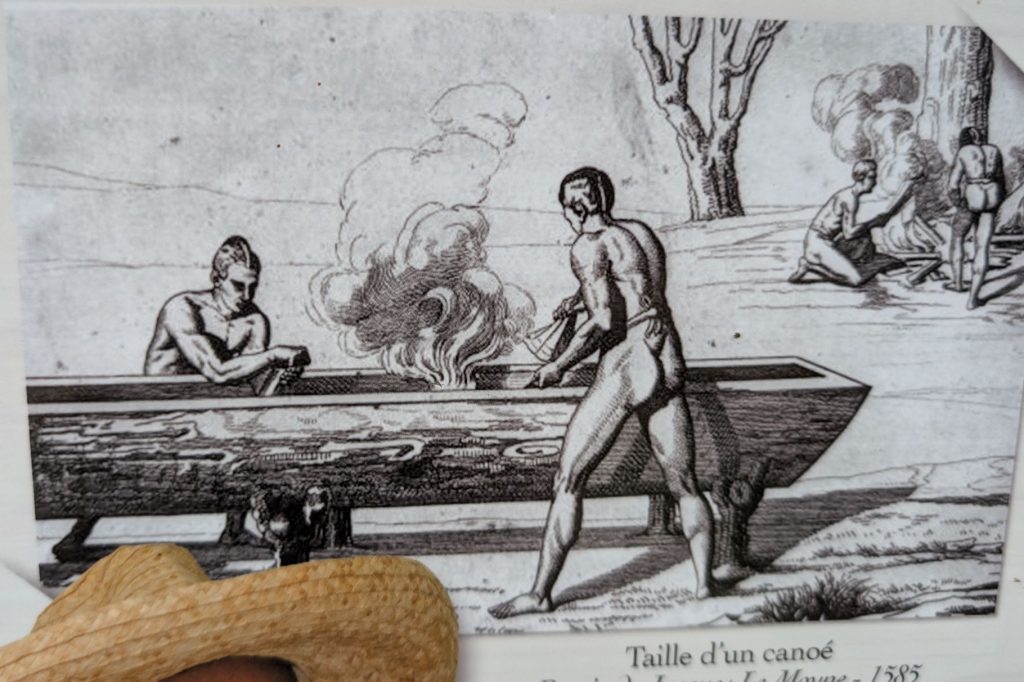
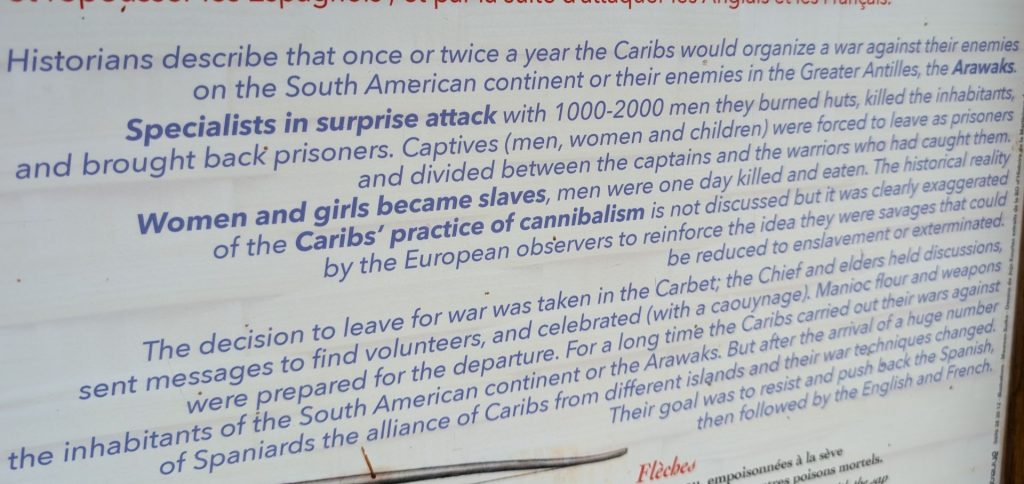
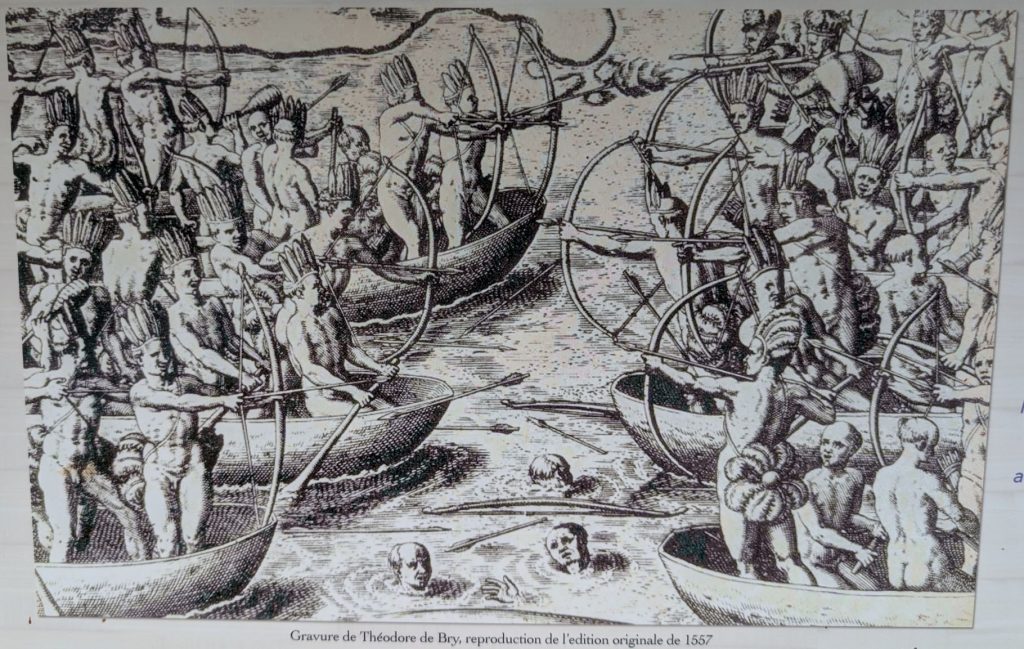
This game looks like a lot of fun. . . and pretty good exercise!
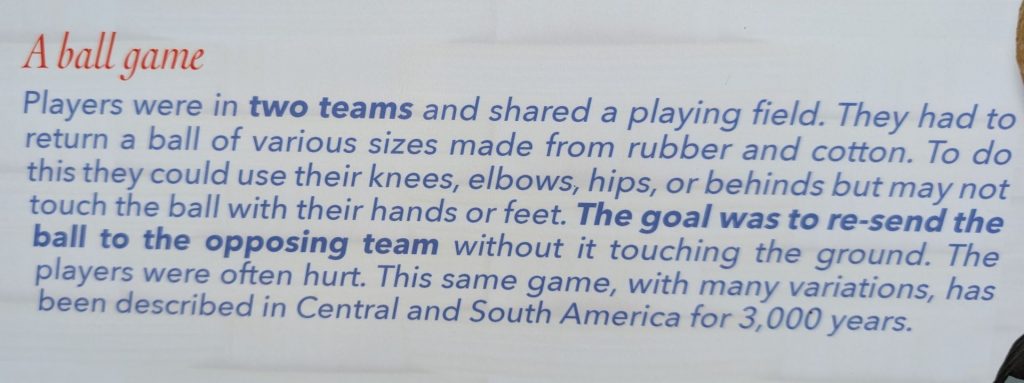
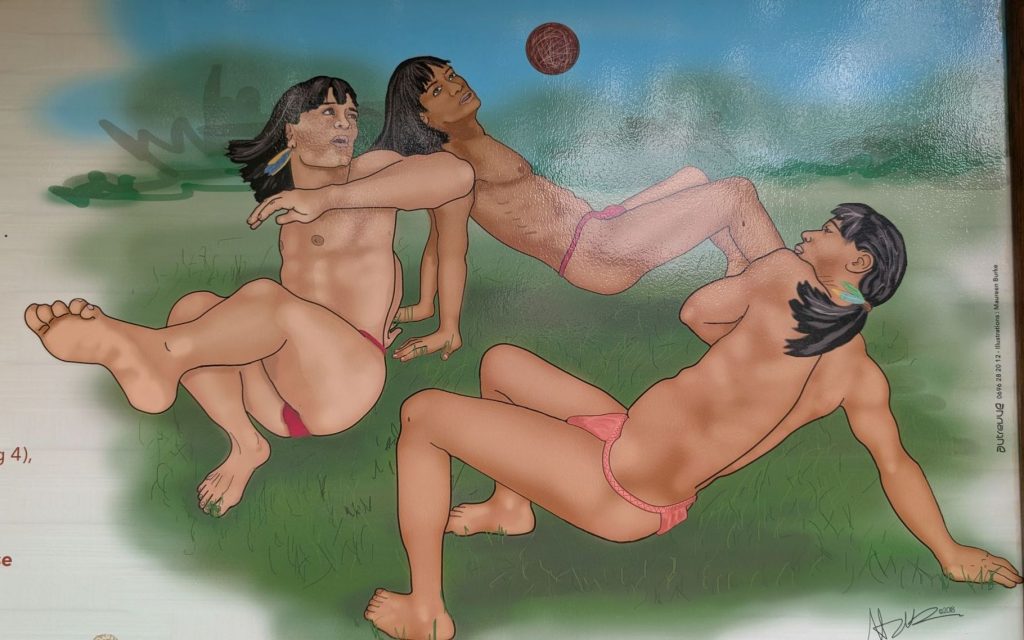
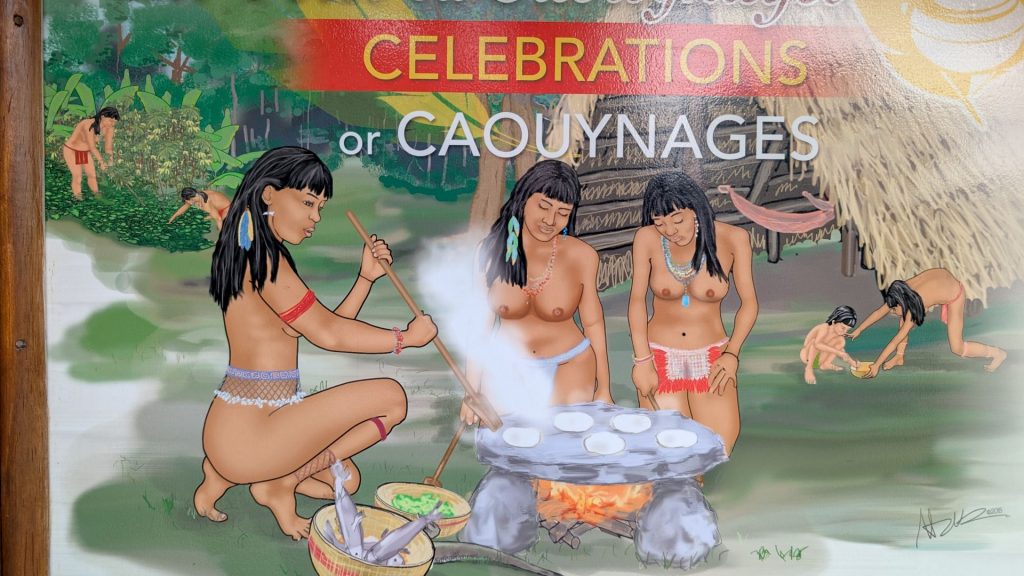

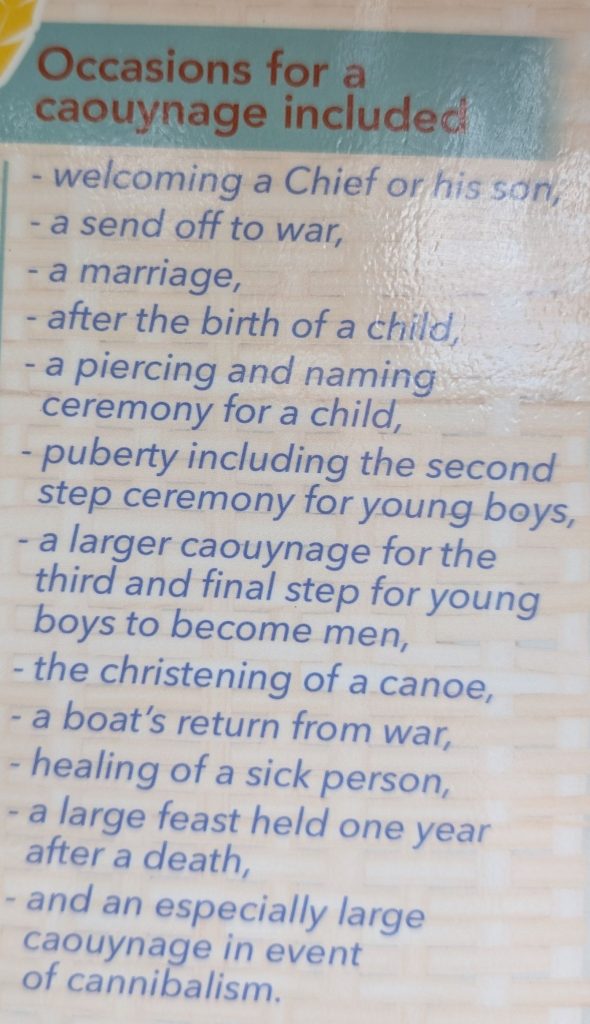
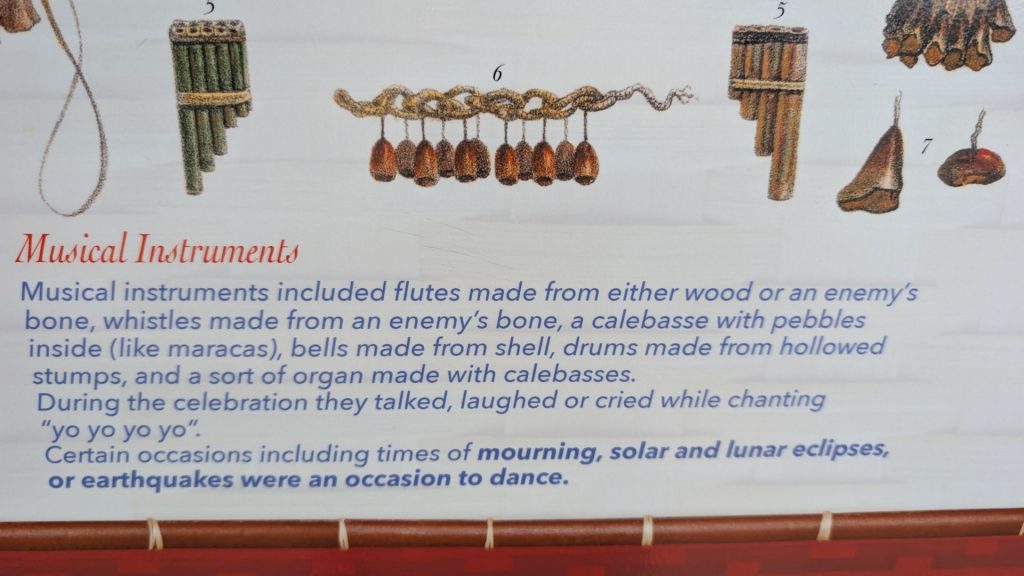
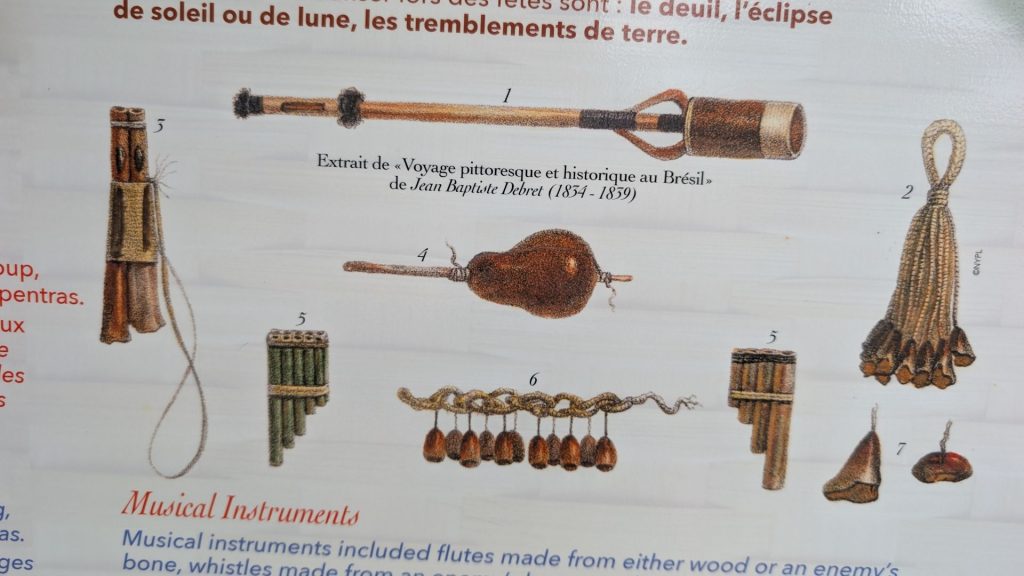
I haven’t shared any of the atrocities of slavery in this post thus far. They are so horrible that I don’t want to share many, but I feel somewhat obligated to share some, as this entire property is dedicated to the history of Martinique, which includes slavery. I am going to limit the information due to the extremely disturbing content.
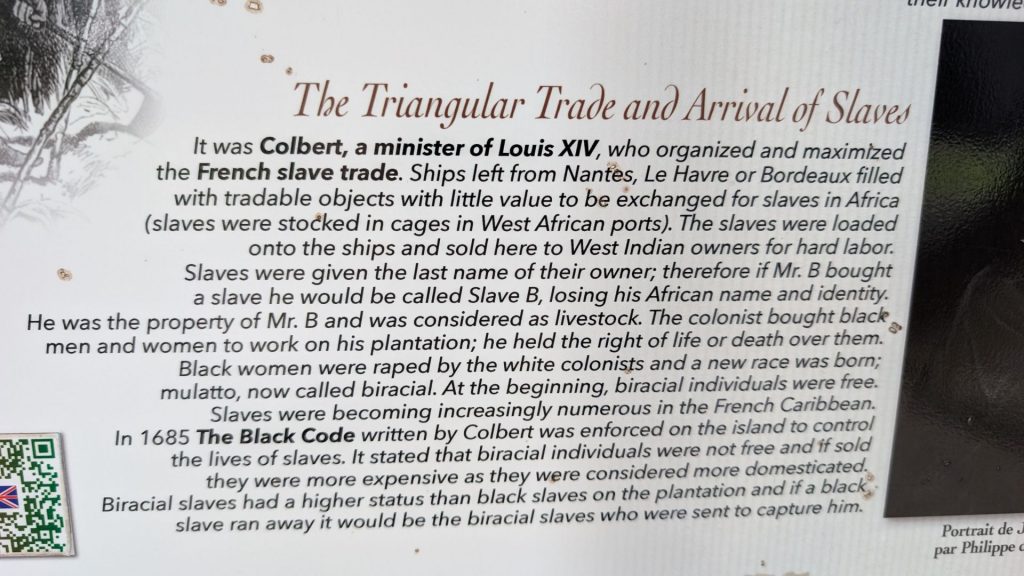
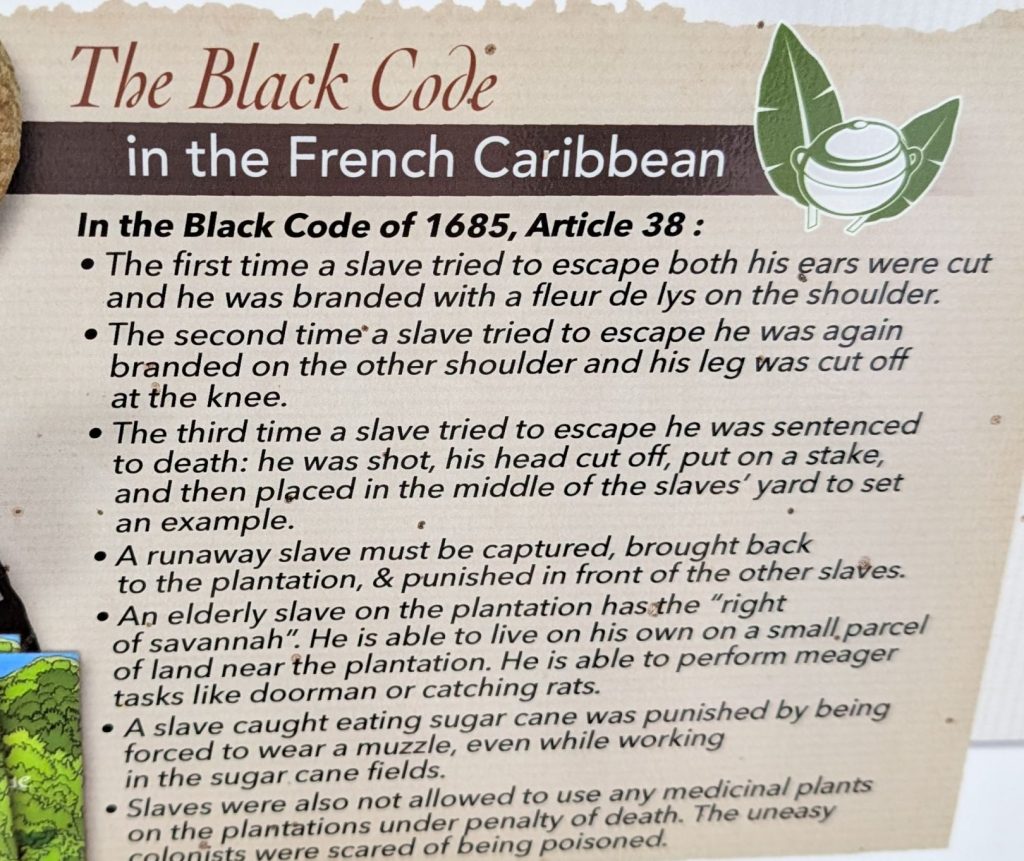
Here are a couple of documents (each requiring more than one picture) regarding the lived experience of the non-white people. The first is a code on emancipation.
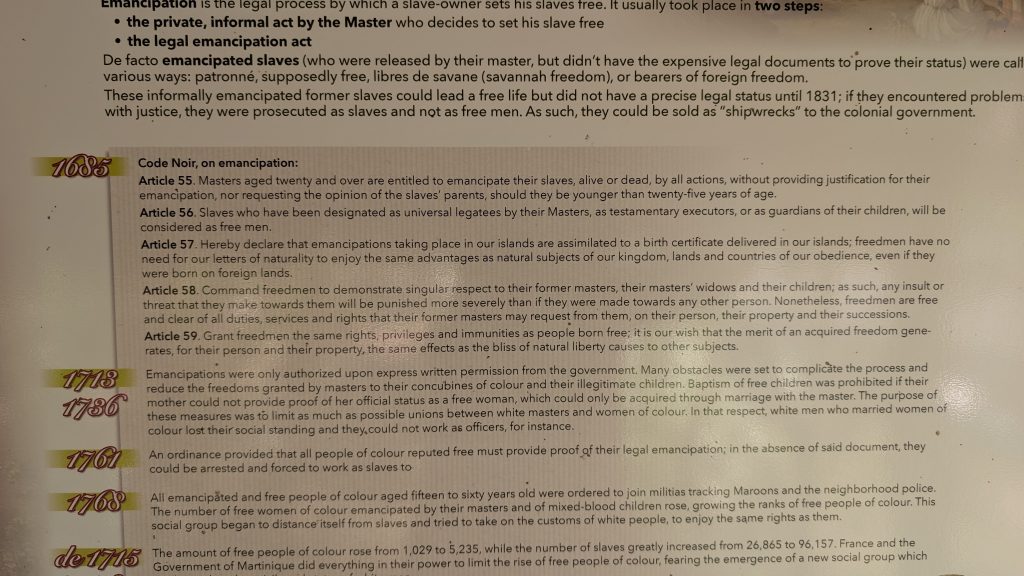

The next document was titled “Free People of Colour”:
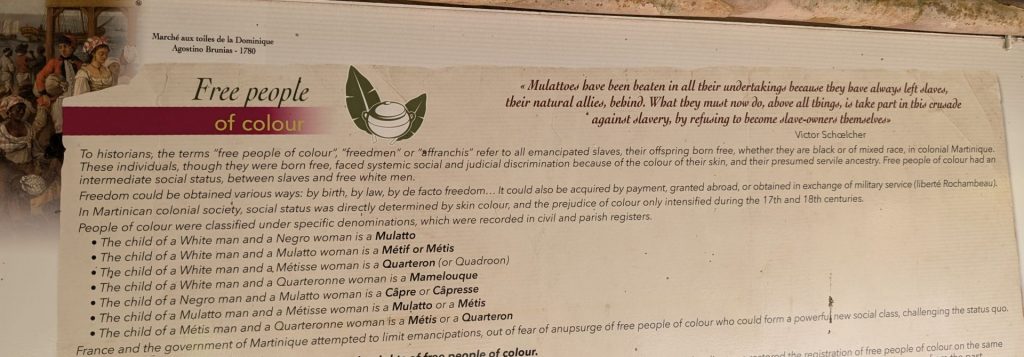

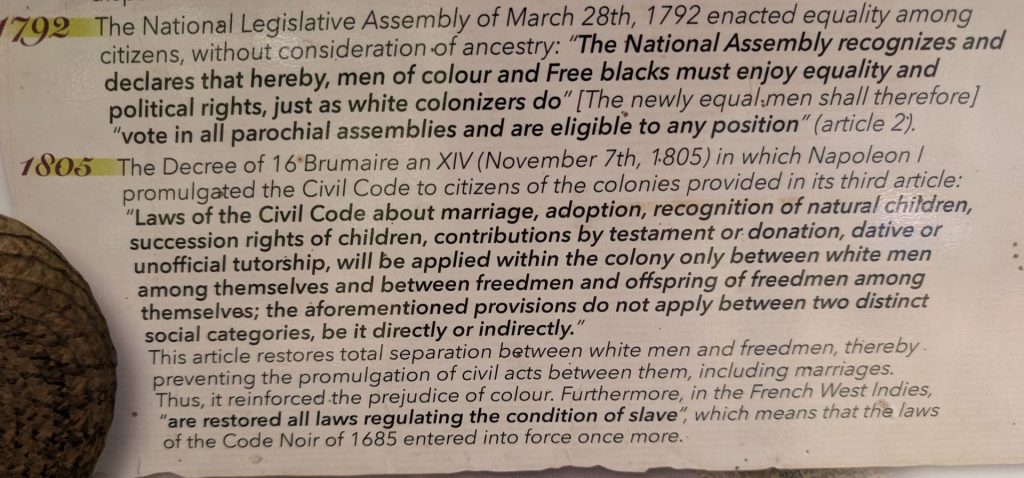
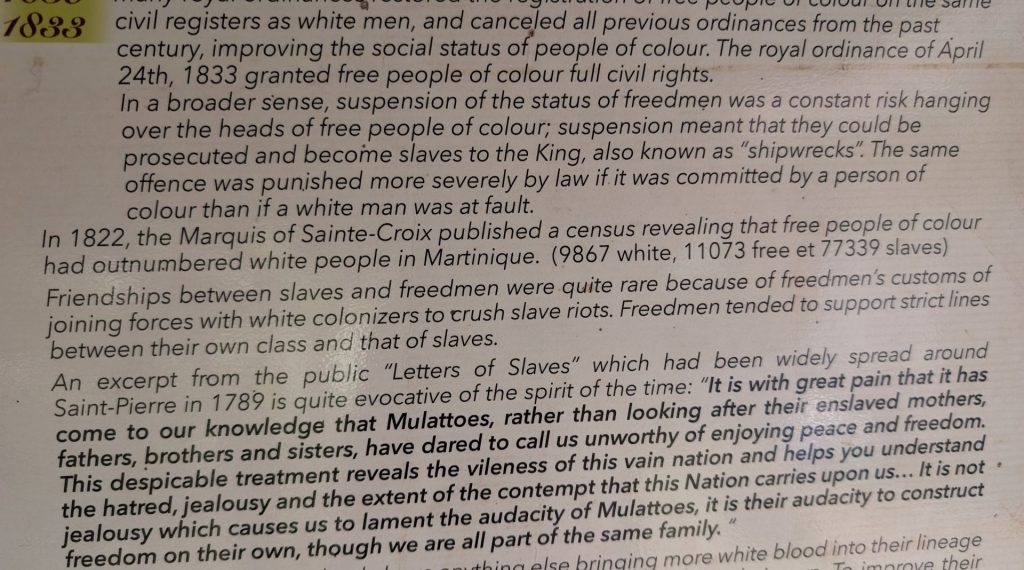
The next picture is the rest of the “1833” section:
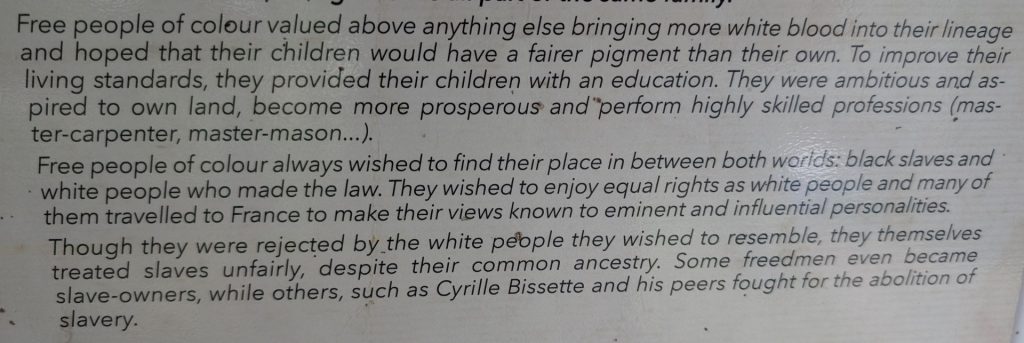
I am not sure why this sign ends with “Today” since there are no longer slaves in Martinique. Maybe it means that they largely lived in the countryside until 50 years ago.
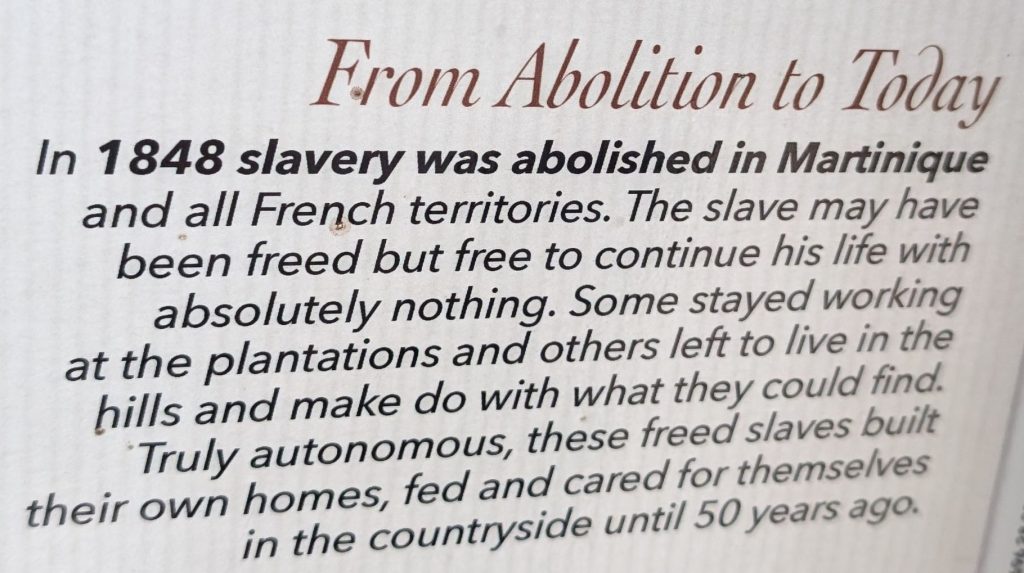
From our experience, Martinique today is an amazing country with kind people of various beautiful skin colors. We felt nothing but warmth and generosity from the Martinicans and it remains one of our favorite islands.
